Australia is the only country that is also a continent. In area, Australia ranks as the sixth largest country and smallest continent. It lies between the South Pacific Ocean and the Indian Ocean, about 7,000 miles (11,000 kilometers) southwest of North America and about 2,000 miles (3,200 kilometers) southeast of mainland Asia. Australia is often referred to as being “down under” because it lies entirely within the Southern Hemisphere. The name Australia comes from the Latin word australis, which means southern. The official name of the country is the Commonwealth of Australia.
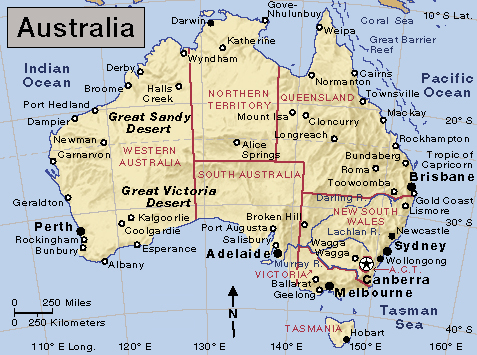
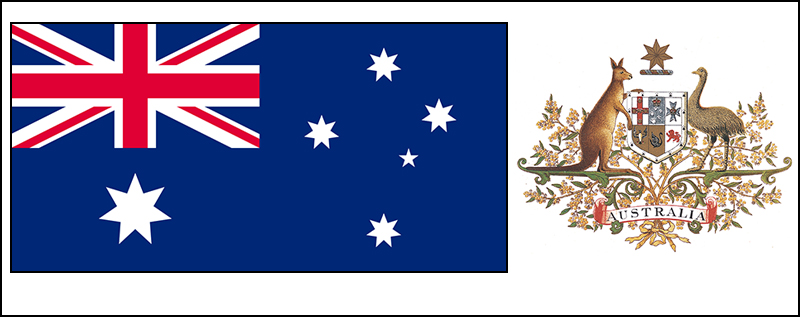
Australia's national anthem
Australia has many different kinds of environments and climates, from tropical in the north to temperate (with warm summers and cool winters) in the south. The huge interior of Australia is mostly desert or dry grassland and has few settlements. Australia is the second driest continent. Only Antarctica gets less precipitation than Australia. However, Australia has numerous areas with a pleasant climate and enough rainfall and fertile soil for agriculture.
The southeastern coastal region has the most people by far. Australia’s two largest cities—Sydney and Melbourne—lie in this region. Canberra, the national capital, lies only a short distance inland. The country as a whole averages only about 9 people per square mile (4 people per square kilometer). Most Australians live in urban or suburban areas in the major cities. Australia is famous for its vast open spaces, bright sunshine, and unusual wildlife. Kangaroos, koalas, platypuses, and wombats are only a few of the many unusual animals that live in Australia.
The country was once a group of British colonies, and most Australian people have British ancestry. When people first moved to Australia from Great Britain (now the United Kingdom), they took many British customs with them. Australia’s government and legal system are based on those of the United Kingdom. Since the 1950’s, immigration from many different countries has made the population more mixed and the way of life more varied. Australia now considers itself a multicultural nation.
Australians have developed a way of life all their own. Australia has a warm, sunny climate. People spend much of their free time out of doors. Australians love outdoor sports and outdoor living in general. Many Australians also like to travel overseas for study, work experience, and holidays. See Life expectancy (table: Life expectancy at birth for selected countries).
Australia has a thriving economy that makes it one of the world’s developed countries. It has busy cities, modern factories, and highly productive farms and mines. Australia is among the world’s leading producers of copper, diamonds, gold, iron ore, silver, tin, and zinc. Australia also produces and exports large amounts of other minerals and farm goods. Income from these exports makes it possible for most Australians to have a high standard of living. Australia’s chief trading partners are China and Japan.
The Aboriginal peoples of Australia were the first people to live in Australia. Aboriginal people had lived in Australia for more than 65,000 years before the first Europeans arrived. The Torres Strait Islands are the home of the Torres Strait Islander peoples, Australia’s other collective group of Indigenous (native) peoples.
Great Britain established a prison colony in Australia in 1788. After British settlement, the number of people of European descent steadily increased, while the Indigenous population declined dramatically. The Indigenous population slowed its decline in the early 1900’s and has been increasing since the mid-1900’s. Today, the majority of Australians are of European descent, although there are now also many Australians with Asian and Middle Eastern backgrounds.
For government and history information, see Australia, Government of, and Australia, History of.
People
Population and ancestry.
For the total population of Australia, see the Australia in brief table with this article. Approximately 80 percent of Australia’s people live in the southeastern quarter of the country, especially in large cities along the coast. Most of the rest of the people live along the northeast and the extreme southwest coasts. The vast interior of Australia is too dry to support a large population, and few people live there. Canberra, the national capital, is the largest inland city. It lies about 80 miles (130 kilometers) from the coasts.

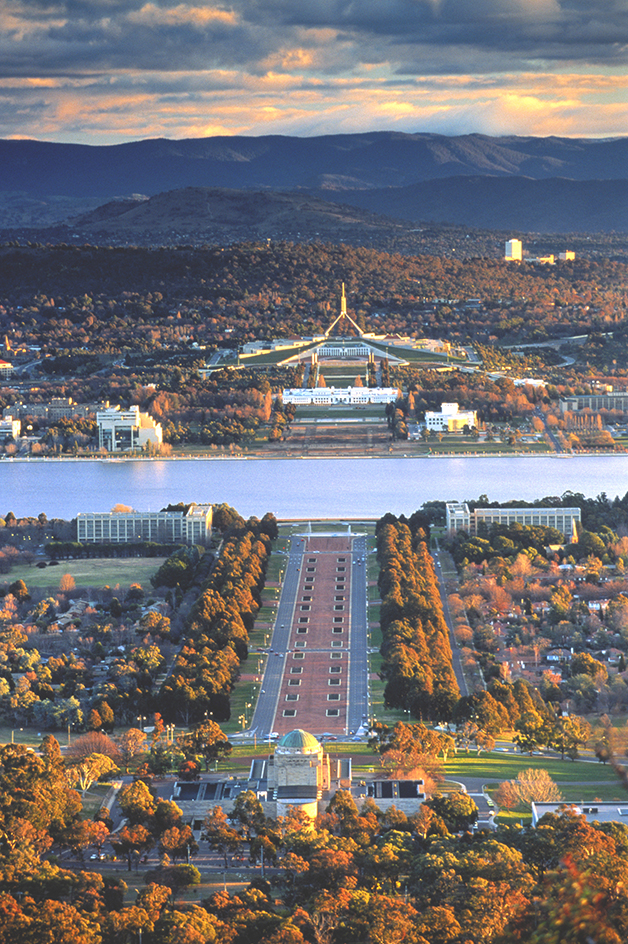
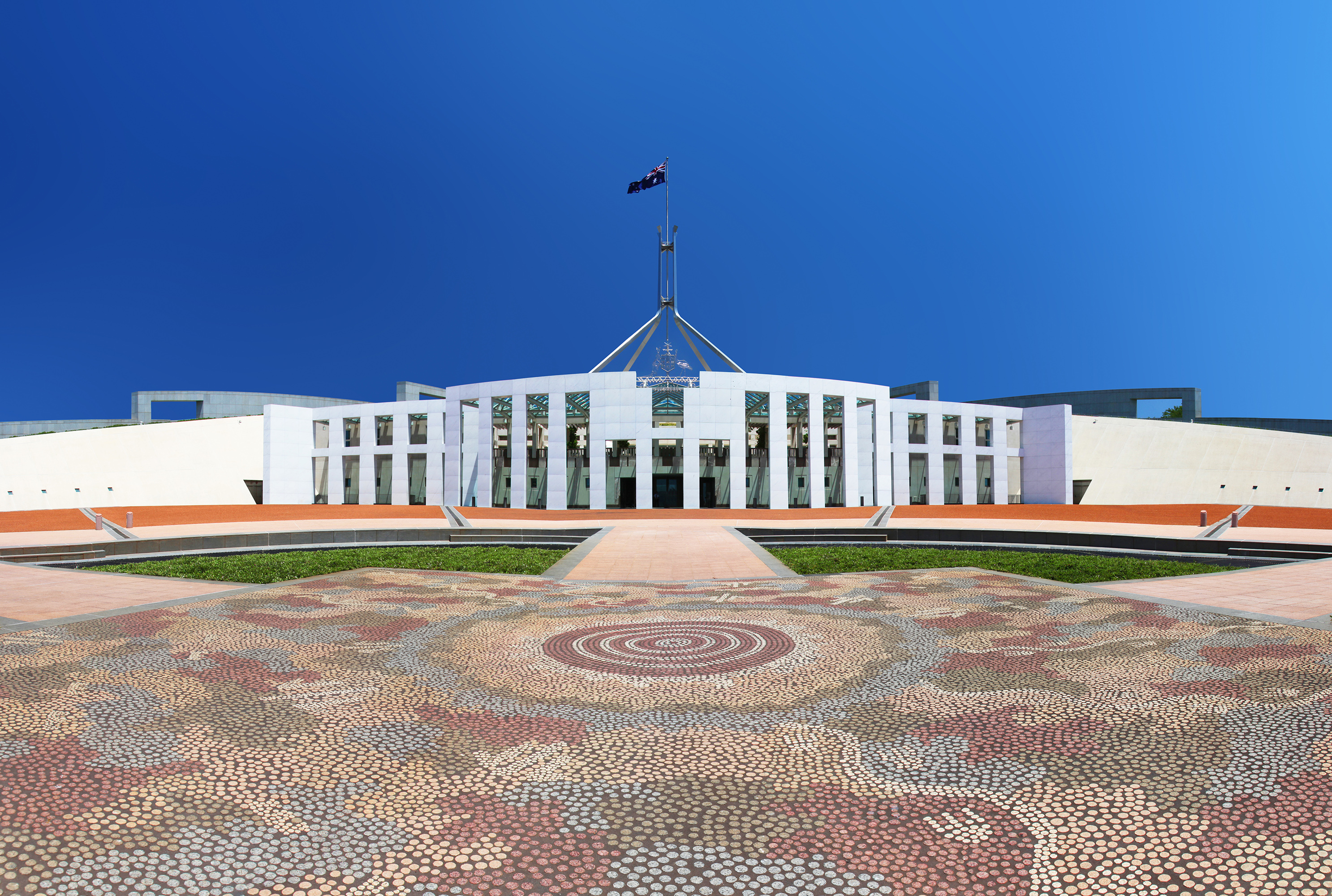
Most Australians are European immigrants or descendants of European immigrants. Indigenous peoples make up about 3 percent of the population. Traditionally, Australia has relied heavily on immigrants to build up its labor force. Through the years, millions of immigrants have been attracted to Australia by the promise of high-paying jobs, security, and a clean environment.
Until the mid-1900’s, the great majority of Australia’s immigrants came from the United Kingdom and Ireland. As a result, most Australians are of British or Irish ancestry. After World War II ended in 1945, the government began a special program to encourage mainland Europeans left homeless by the war to move to Australia. The government later broadened this program to include any Europeans who wished to move to Australia and could meet the country’s immigration requirements. In general, the immigration authorities prefer applicants who have some special job skill and a stable personal background.
Australia has an exceptionally large foreign-born population because of the high rate of immigration since World War II. About 30 percent of all Australians were born in other countries. Australia has admitted about 9 million immigrants since the end of the war. Many have come from the United Kingdom and Ireland. Most of the rest of the immigrants have come from mainland Europe. Relatively few Canadians and Americans have moved to Australia. Immigration from Asia has greatly increased since the 1970’s, and European migration has declined. During the late 1900’s and early 2000’s, the number of immigrants from New Zealand and Southeast Asia increased rapidly.
Language.
English is the official language of Australia. However, about 25 percent of the people speak a language other than English at home. The most common languages after English include Arabic, Chinese, Punjabi, and Vietnamese.
Australian English differs from British English in certain ways. The British who colonized Australia had to develop a vocabulary to describe the many unfamiliar animals and plants in their new environment. In some cases, the colonizers used existing English words. For example, they gave the name magpie to a bird that resembles the British magpie but is actually unrelated to any bird in the United Kingdom. In other cases, the British settlers borrowed words from Aboriginal people. Such Aboriginal words as kangaroo and koala were thus introduced into English.
Early European settlers in the Australian interior invented a large, colorful vocabulary. Large farms became known as stations, their owners as squatters. A herd of animals is a mob, and wild horses are brumbies. The interior itself became known as the outback. Australian English has also produced many colorful figures of speech. For example, an exceptionally brave person is said to be “as game as Ned Kelly.” Ned Kelly was a famous Australian outlaw of the 1870’s. “Waltzing Matilda,” the title of Australia’s most famous song, refers neither to a dance nor to a woman. A matilda is a blanket roll. “To waltz matilda” means “to tramp the roads.” Loading the player...
Waltzing Matilda
Australians have a distinctive accent, different from accents in other English-speaking countries around the world. The accent differs little from one part of Australia to another. However, it varies somewhat according to a person’s family background, amount of schooling, and gender.
The Indigenous peoples of Australia
include the Aboriginal peoples and the Torres Strait Islander peoples, each a population of many peoples. Indigenous people were the first inhabitants of Australia, but most were displaced after Europeans arrived. The majority of Aboriginal and Torres Strait Islander people now live in cities and towns. Today, they are also called First Nations peoples or First Australians.
Since the late 1900’s, some Aboriginal people in central and northern Australia have stayed on, or returned to, their ancestral lands. There they often live in community settlements. These communities preserve some traditional Aboriginal ways of life, especially languages, religious beliefs, and styles of painting and craftwork. City and outback communities also nurture new developments in Aboriginal culture. Contemporary styles of Aboriginal painting and music, such as the rock group Yothu Yindi, have flourished. Contemporary Aboriginal painting is now one of the most important and internationally recognized forms of Australian art. 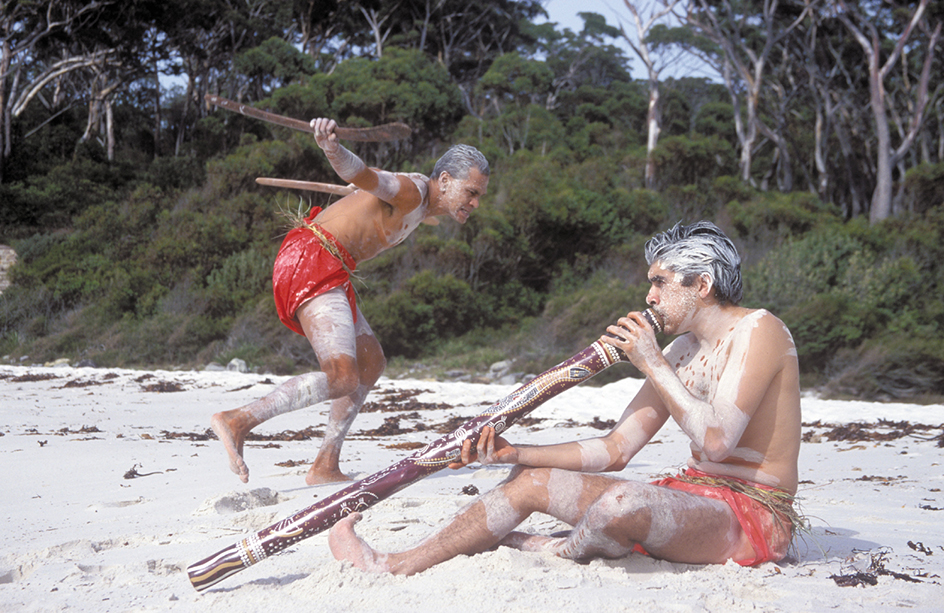
For more information on the history and culture of the Indigenous peoples of Australia, see Aboriginal peoples of Australia, Torres Strait Islander peoples, and Australia, History of.
Ways of life
For most of the 1900’s, the difference between rich and poor in Australia was smaller than in most other Western countries. In the late 1900’s, this gap began to increase rapidly. Australia now has clear social differences in the wealth, employment, and education of its people. With the exception of some Aboriginal people, however, Australia still lacks the extremes of poverty found in other developed countries.
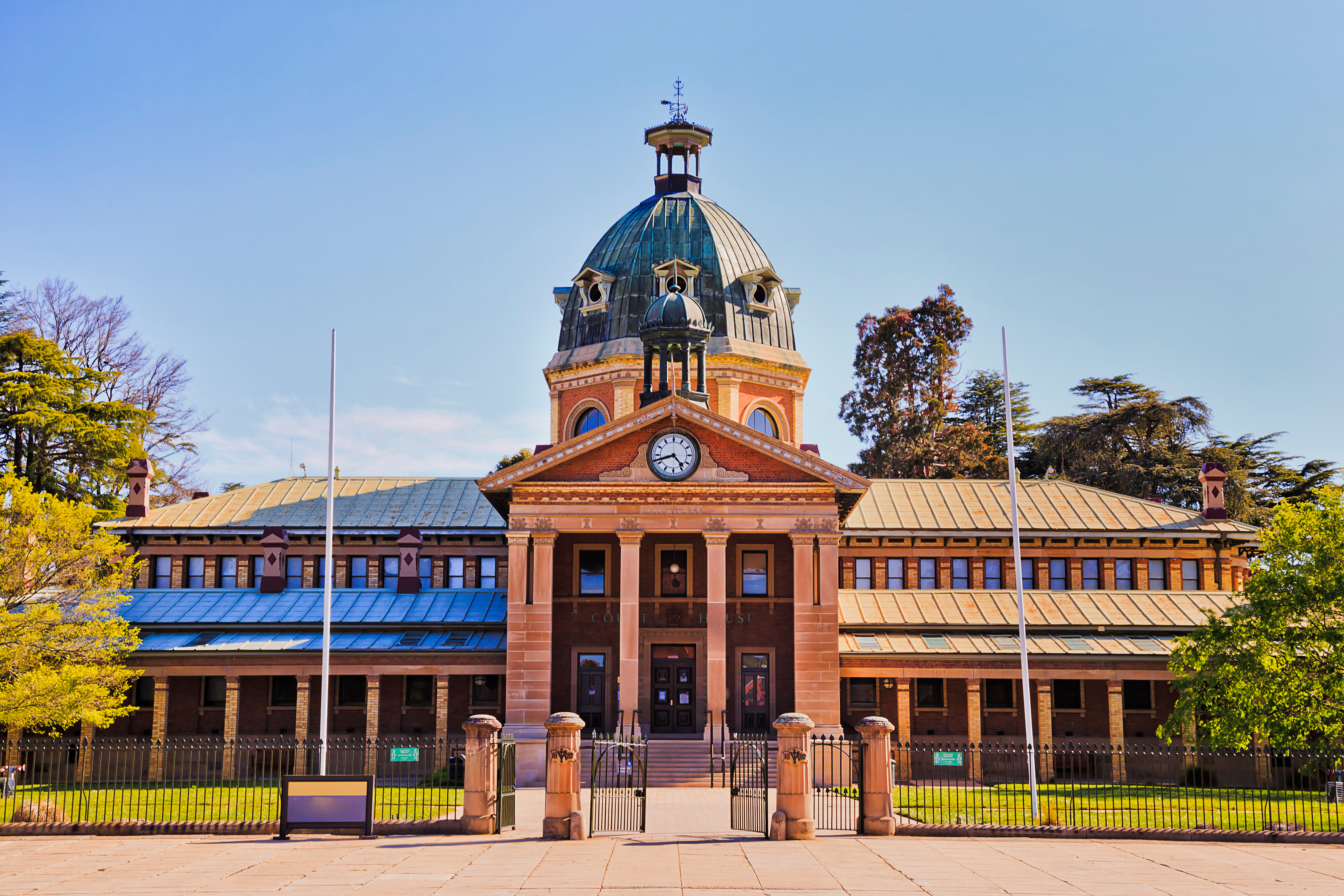
Australia does not have strong regional differences in cultures or lifestyles. However, lifestyles in rural Australia are different from those in the cities. Many rural regions are poorer than city areas. The rural areas have higher levels of unemployment, reduced access to cultural and educational institutions, and fewer government or commercial services. Rural and urban voting patterns in elections are quite different. For example, rural voters more often support conservative candidates.
City life.
About 87 of every 100 Australians live in cities and towns, making Australia one of the world’s most urbanized countries. About three-fourths of all Australians live in cities of more than 100,000 people. These cities include the federal capital, Canberra, and the six state capitals. The state capitals, in order of size, are Sydney, New South Wales; Melbourne, Victoria; Brisbane, Queensland; Perth, Western Australia; Adelaide, South Australia; and Hobart, Tasmania. Canberra is smaller than all the state capitals except Hobart. Sydney and Melbourne are by far the biggest cities in Australia. Both cities have over 4 1/2 million people.
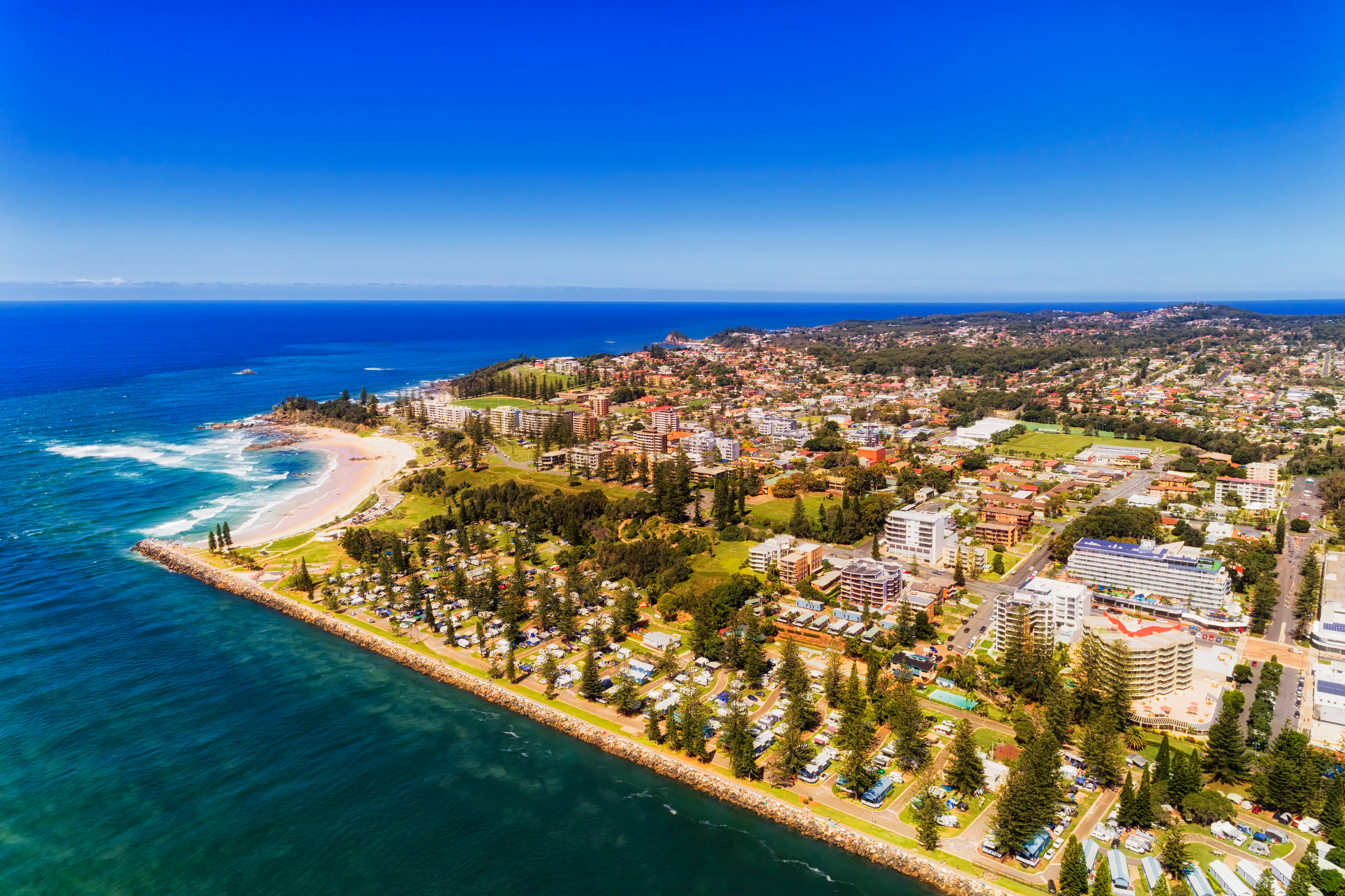
Each of Australia’s state capitals serves not only as the political center but also as the commercial, industrial, and cultural hub of its state. Each is the oldest or one of the oldest settlements in the state. Each was laid out near the mouth of a river and as close as possible to a good ocean harbor. The river provided drinking water. The harbor facilitated trade and immigration. These advantages helped each state capital become the largest city in its state.
The main business district of each state capital is its oldest section, the area nearest the waterfront. In the largest cities, modern structures, including high-rise office buildings, have replaced most of the original buildings in this section. In addition to office buildings, the city-center areas have fine shops, theaters, and restaurants. 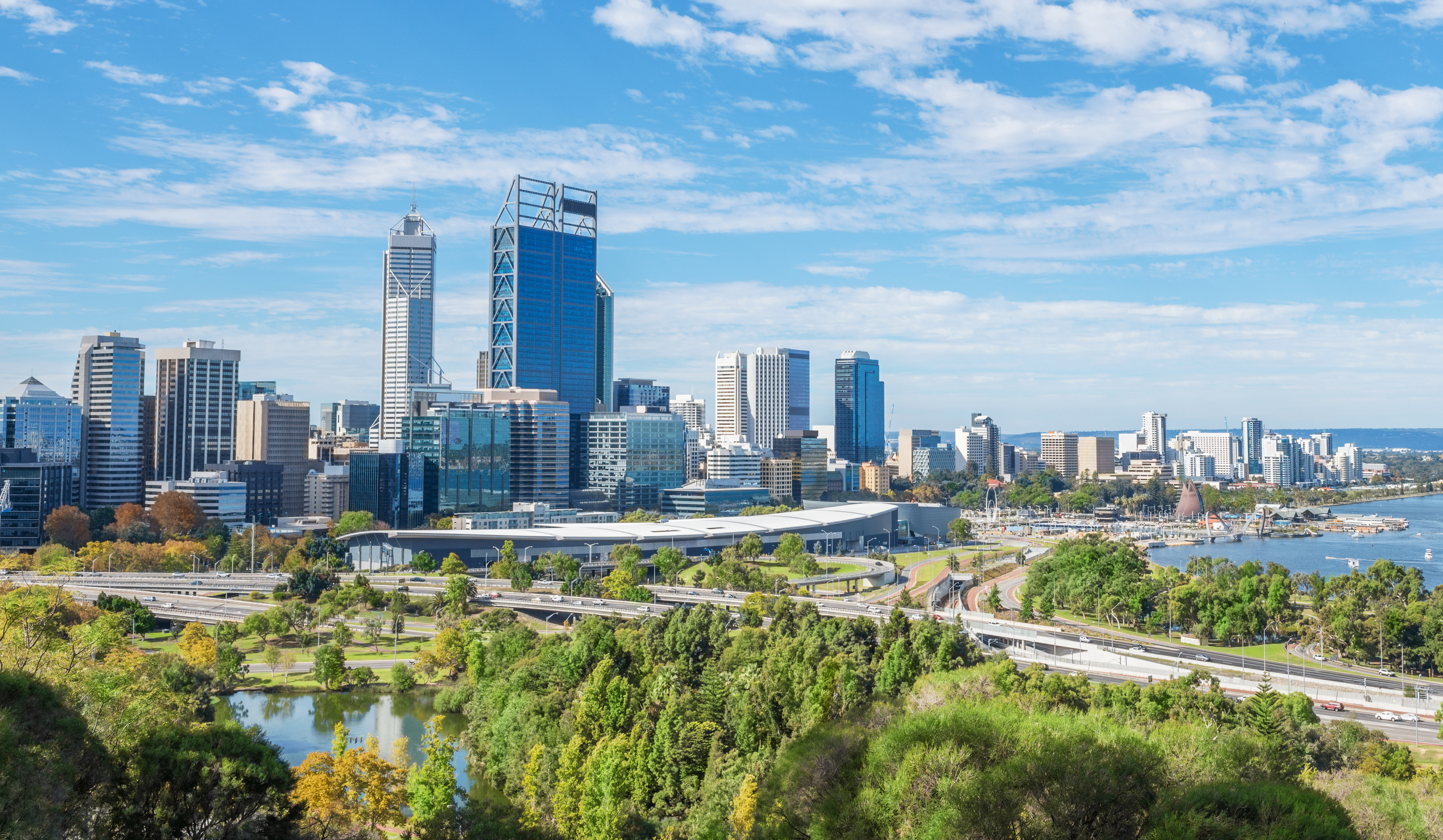
Most city dwellers in Australia live in the suburbs that extend outward from the central business district. The suburbs have their own schools, churches, shopping centers, and recreational facilities. Some suburbs, especially those around Sydney and Melbourne, also have industrial districts. Since the late 1900’s, developers have built new high-rise apartment buildings in the central areas of the large cities. Older buildings, such as factories and warehouses, have been converted to modern apartments.
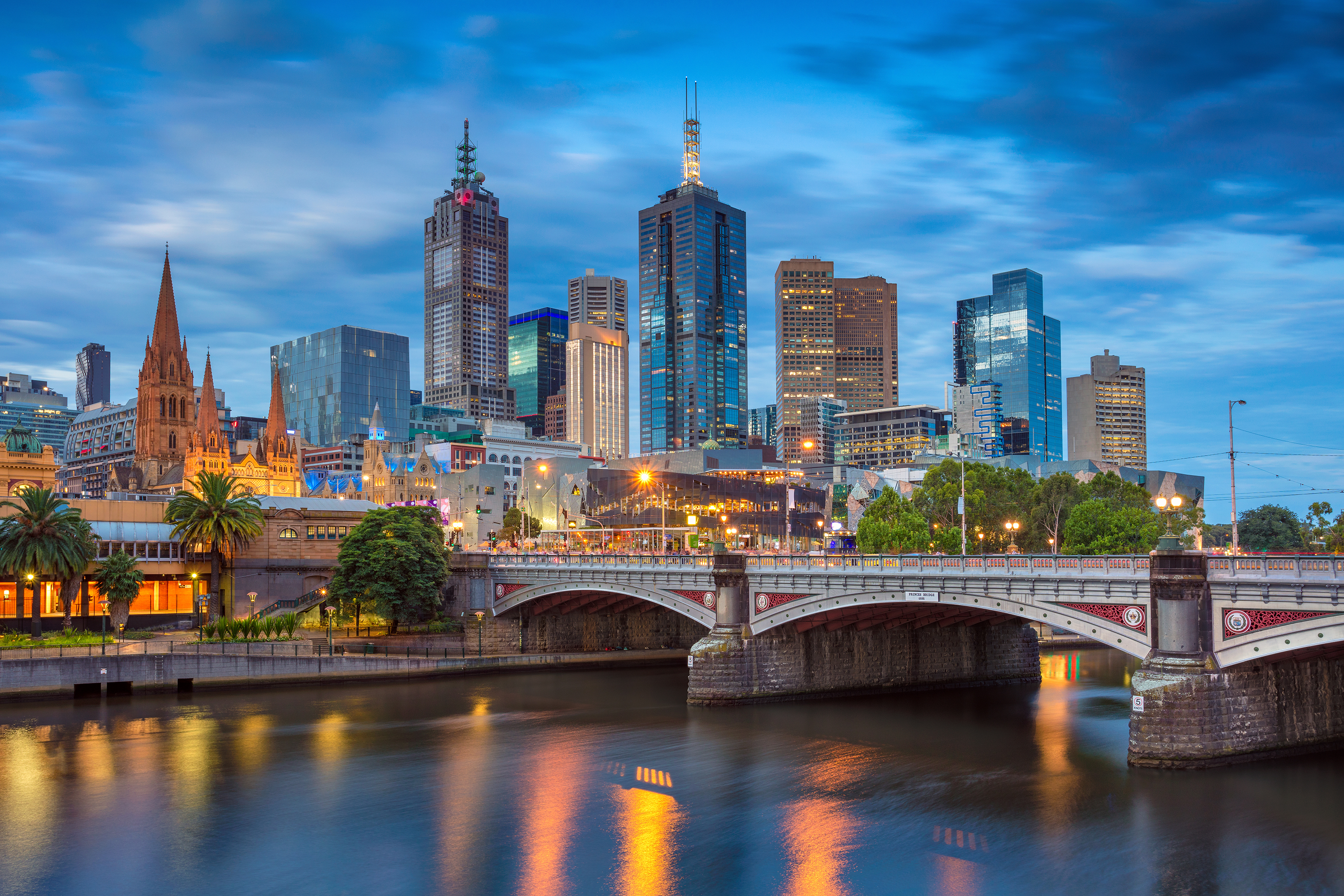
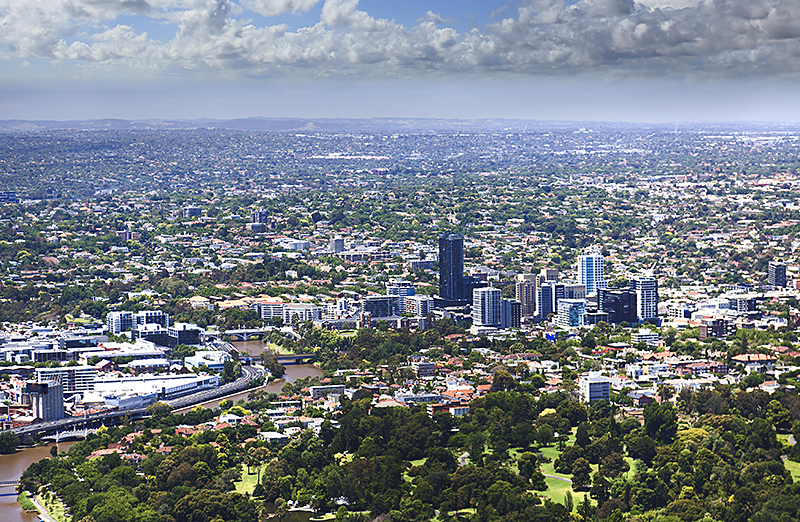
Most families live in single-story houses, each with its own garden. About three-fourths of families own their houses. There are differences in the older style of housing in the different cities. In Queensland, the older houses are made of wood, with verandas (wide porches), and they are built above the ground on poles called stumps. In Melbourne and Sydney, many of the older houses are made of brick or stone and built in rows called terraces.
Australia’s big cities have problems common to big cities everywhere, including air pollution and rush-hour traffic jams. Before the 1950’s, the inner suburbs, those closest to the city, were the poorest residential areas. These areas had high rates of unemployment and crime. But during the 1950’s, many non-British immigrants began settling in the inner-city suburbs and helped to regenerate them. Now many middle-class and wealthy residents have moved to these areas, and many poorer families live in the outer suburbs.
Country life.
Only about 13 of every 100 Australians live in rural areas. Australians call the remote countryside the bush. The term outback refers specifically to the interior. The outback consists mainly of open countryside, including vast expanses of grazing land. But it also has widely scattered settlements. The largest ones are mining towns. 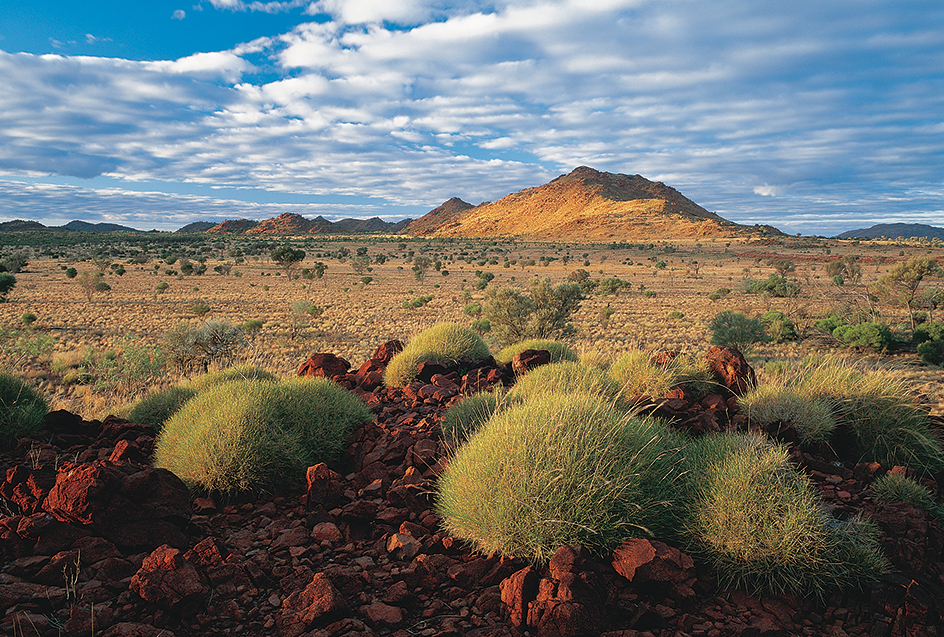
Nearly all farms in the outback are wheat farms or cattle and sheep stations (farms or ranches). Life on the stations tends to be extremely isolated. The largest stations cover over 1,000 square miles (2,600 square kilometers) and so may be 100 miles (160 kilometers) or more from the nearest town. In addition, the outback has few paved roads, and so travel by automobile may be difficult or impossible. Many well-to-do farm families have a light airplane, which they use for transportation to and from town. Families who do not own a plane may get to town only a few times a year. In farming regions nearer the coasts, the towns are larger and closer together. But even in those regions, farm families may feel far removed from the life of the cities.
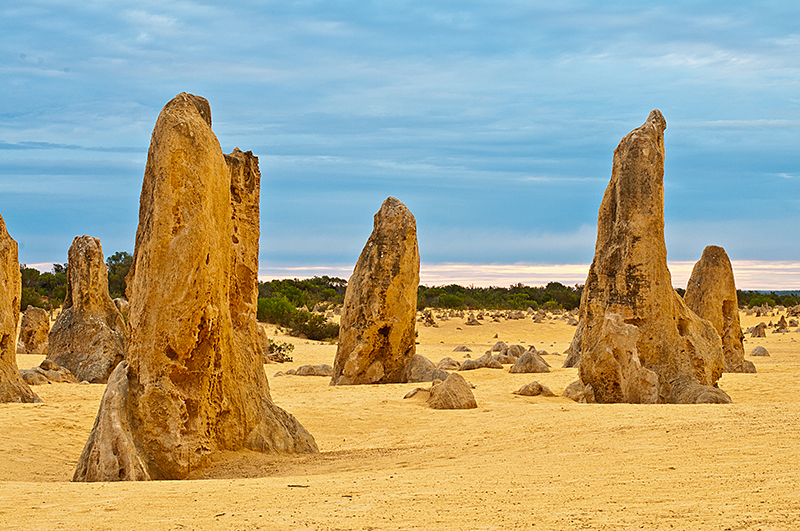
Rural Australians’ sense of community is reflected in the fact that they have long had their own political party, the National Party. Many rural communities in Australia have their own traditional fairs called shows, festivals, and sports competitions.
Poverty is a problem in some rural areas due to the lack of local employment. However, most farm families own their farms and live comfortably. Older farmhouses are built of wood and surrounded by a veranda. Newer farmhouses are constructed of bricks. Nearly all the houses have electric power, and a growing number of them have air conditioning.
All rural areas in Australia have such natural disasters as droughts, floods, and bushfires. Fires can even come close to the major cities in areas like the Blue Mountains, north of Sydney, or the Dandenong Ranges, near Melbourne.
Food and drink.
Meat is plentiful in Australia and makes up a large part of the people’s diet. Beef is the most popular meat, followed by poultry, pork, and lamb and mutton. British customs strongly influenced Australian food choices until after World War II. Since the late 1950’s, the number of immigrants from mainland Europe has increased. More Australians travel to Europe and other areas. As a result, Italian, Greek, and other European styles of cooking have become increasingly popular. In restaurants and in the home, Australian food also shows the strong influence of Indian and Southeast Asian cooking styles. Chinese restaurants are common throughout Australia. In addition, the larger cities have Indian, Japanese, Thai, and Vietnamese restaurants.
Tea remains the favorite hot drink of older Australians. However, younger Australians prefer coffee. Coffee consumption has more than tripled since the mid-1900’s, while tea consumption has declined. Beer is the most popular alcoholic drink. However, its consumption is declining in relation to the consumption of wine, which has increased rapidly since the 1980’s. Australia is an important wine-producing country, and many Australians drink red or white wine regularly.

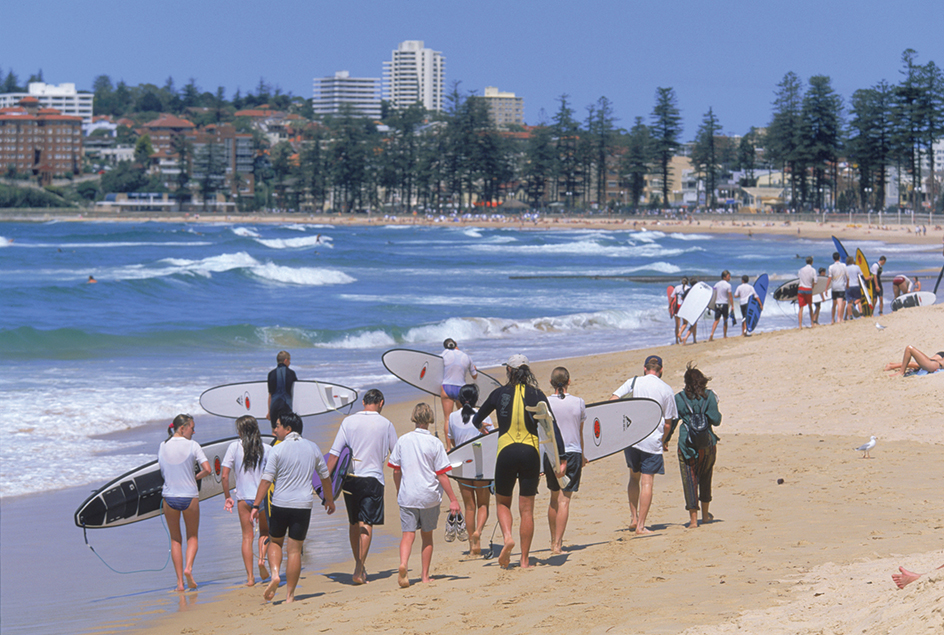
Recreation.
Most Australians enjoy such recreation as visiting friends, going for a drive or walk, or watching television. Outdoor sports are extremely popular. Many people enjoy skin diving, surfing, swimming, or boating. Many also play golf and tennis. Team sports are a national pastime. Australians begin to play team sports in elementary school, and many continue to play them throughout life. The best players may work their way up through local and state competitions and perhaps win a position in one of the national teams. The nation’s professional sports teams have large and enthusiastic followings.
The most popular team sports in Australia are cricket, Australian Rules football, Rugby League, Rugby Union, basketball, soccer, and netball (a goal-scoring game of throwing and catching that is played by two teams). Cricket is a favorite summer sport in Australia. The Australian national cricket team regularly plays against teams from England, India, New Zealand, Pakistan, South Africa, and the Caribbean.


Australian Rules football, Rugby League, Rugby Union, and soccer are played mainly during the winter. Australian Rules football was invented in Australia and is played mainly there and in the former Australian possession of Papua New Guinea. It is especially popular in southern Australia (see Australian Rules football). Rugby League and Rugby Union are forms of football that were invented in England. Australia plays Rugby League and Rugby Union chiefly against the United Kingdom, France, South Africa, and New Zealand. Soccer is the fastest-growing team sport in Australia. The national soccer team plays teams from many other countries.
Netball is played mainly by women. It is popular in the countries of the Commonwealth that were once British colonies. Australia has often been the world champion. In terms of the number of people playing the sport, netball is the most popular team sport in Australia. However, it does not attract the media attention or large crowds of such sports as Australian Rules football and cricket. See Netball.
Australia has produced many world-famous athletes, especially in tennis, golf, swimming, and track and field. Australians have won numerous Olympic medals in swimming, track and field, rowing, cycling, and yachting. Australians also compete successfully in the international sport of surfing.

Top Australian tennis stars include Evonne Goolagong Cawley, who won seven major tournament singles titles in the 1970’s and early 1980’s. Margaret Smith Court won the grand slam of tennis—all four major tournaments in one year—in 1970. Rod Laver was the first tennis player to win the grand slam twice, in 1962 and 1969. Other Australian tennis champions include John Newcombe and Ken Rosewall. Lleyton Hewitt, Patrick Rafter, and Ash Barty gained top rankings in the late 1990’s and the 2000’s.


Australian golf champions include Bruce Crampton, Kel Nagle, Greg Norman, and Peter Thomson. In 2001, Australian golfer Karrie Webb became the youngest woman to win the grand slam of women’s golf, at age 26.
Many Australians have become top-ranked swimmers. Dawn Fraser won three successive gold medals in the women’s 100-meter free-style race at the Olympic Games from 1956 to 1964. Susie O’Neill competed in three Olympics, winning eight medals before her retirement in 2001. Kieren Perkins also competed and won medals in three Olympics. Perkins is the first swimmer in history to hold Olympic, World, and Commonwealth titles at the same time. His teammate in the 2000 Olympics, Ian Thorpe, won five medals. Thorpe became one of the world’s dominant free-style swimmers while still a teenager. Stephanie Rice won three gold medals at the 2008 Olympics. Other well-known Australian swimmers include Rebecca Brown, Bronte Campbell, Cate Campbell, Shane Gould, Grant Hackett, Samantha Riley, and Murray Rose.
Famous Australian track and field athletes include Ron Clarke, Herb Elliott, and John Landy. The Aboriginal track star Cathy Freeman lit the Olympic flame during the opening ceremony of the 2000 Olympic Games in Sydney. She won the gold medal in the women’s 400-meter race at those Olympics.

Some of Australia’s traditional sporting events receive worldwide attention. Probably the most famous event is the annual Melbourne Cup, a horse race eagerly followed by Australians and attended by racing fans from throughout the world.
Education.
Each Australian state and mainland territory has its own laws concerning education. The federal government regulates education in the other territories. Children must attend school from about age 6 to age 16, depending upon where they live, but those leaving school before age 17 typically must enroll in a vocational program or work full time. The majority of Australian students attend state or territory schools. Other students go to Roman Catholic schools or other independent schools.
Each Australian state operates its own state school system. However, the state systems use some funding from the federal government to support their school system. The Roman Catholic Church owns and operates most of Australia’s independent schools. Unlike the state schools, most of the independent schools in Australia charge a tuition fee. The federal government supplies funds to assist independent schools.
Australian primary schools provide six to eight years of study. The number of years varies from one state or territory to another, and in some cases includes a year of kindergarten. Australian secondary schools offer five or six years of education, depending on the state or territory. The vast majority of the students continue beyond the required years of schooling, and most of them graduate from secondary school. Most of the students who graduate go on to a university or college. See Literacy (table: Literacy rates for selected countries).
Many Australian children in remote areas of the outback receive their primary and secondary education at home by means of traveling teachers and correspondence schools, often called schools of the air. Each state operates a correspondence school for children in isolated areas. The Northern Territory operates two such schools. The students receive and turn in their assignments by mail or through the Internet. Four states—New South Wales, Queensland, South Australia, and Western Australia—and the Northern Territory operate schools of the air to enable students to communicate with teachers directly. The teachers are stationed at broadcasting centers in various parts of the country and talk with students by means of two-way radios, computers, televisions, and fax machines. 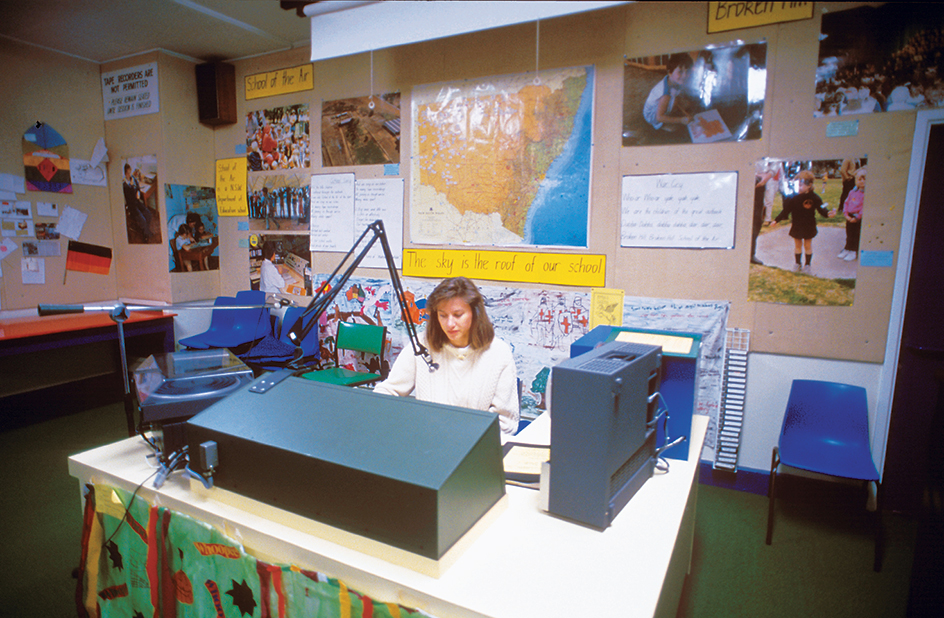
Australia has more than 40 universities or colleges. Most of Australia’s universities are publicly owned. Each university offers undergraduate and graduate studies. Australia also has several publicly owned colleges or institutes, such as the Australian Maritime College, which specialize in particular areas. Students at publicly owned universities and colleges pay tuition fees that cover part of the cost of their education, and the federal government pays the rest. Tuition fees at Australia’s private universities are considerably higher.
Australia has many public and school libraries. For information about Australia’s libraries, see Library (Australia and East Asia).
Religion.
The Australian Constitution forbids a state religion and guarantees religious freedom. About half of Australians are Christians, but many do not attend church regularly. The Anglican Church and the Roman Catholic Church have the most members.
Smaller numbers of Australians belong to the Baptist, Eastern Orthodox, Lutheran, and Uniting churches. In 1977, the Methodist Church of Australasia joined with a majority of the country’s Congregationalists and Presbyterians to form the Uniting Church in Australia. The Uniting Church is now Australia’s third largest Christian denomination. Buddhists, Hindus, and Muslims each make up about 3 percent of the country’s population. Australia has a small Jewish minority. About 40 percent of the population claim no specific religion.
The religions that are growing most rapidly in Australia are Buddhism, Hinduism, and Islam. The proportion of Christians is declining. In general, the size of Australia’s religious groups reflects the ancestry of the people. For example, the Anglican Church began in England, the source of many Australian immigrants. The large number of Roman Catholics reflects the fact that many of the immigrants came to Australia from Ireland, Italy, and other Catholic countries. Most of the Jews or their parents or grandparents came from mainland Europe. The Muslims or their ancestors migrated chiefly from the Middle East and from southern and southeastern Asia.
The arts
The federal government helps fund the major opera, ballet, and theater companies; the major symphony orchestras; and the motion-picture industry. It gives financial help to writers, painters, musicians, and composers.
Literature.
Australia’s Aboriginal and Torres Strait Islander peoples draw on a vast oral literary tradition that spans tens of thousands of years. However, no written record of their cultures existed prior to the British arrival. The first European explorers, settlers, and visitors who came to Australia in the 1700’s and early 1800’s wrote extensively and often beautifully about the new environment and society in Australia.
After about the 1820’s, settlers began to write poetry and literature with a uniquely Australian point of view. Important writers of the period include the poet Henry Clarence Kendall and the novelists Marcus Clarke and Catherine Helen Spence. In the late 1800’s and early 1900’s, Australian literature expressed a growing sense of national identity, pride, and hope. The works of such writers as Henry Lawson, Miles Franklin, Banjo Paterson, and Steele Rudd are distinctly Australian in both subject matter and language.
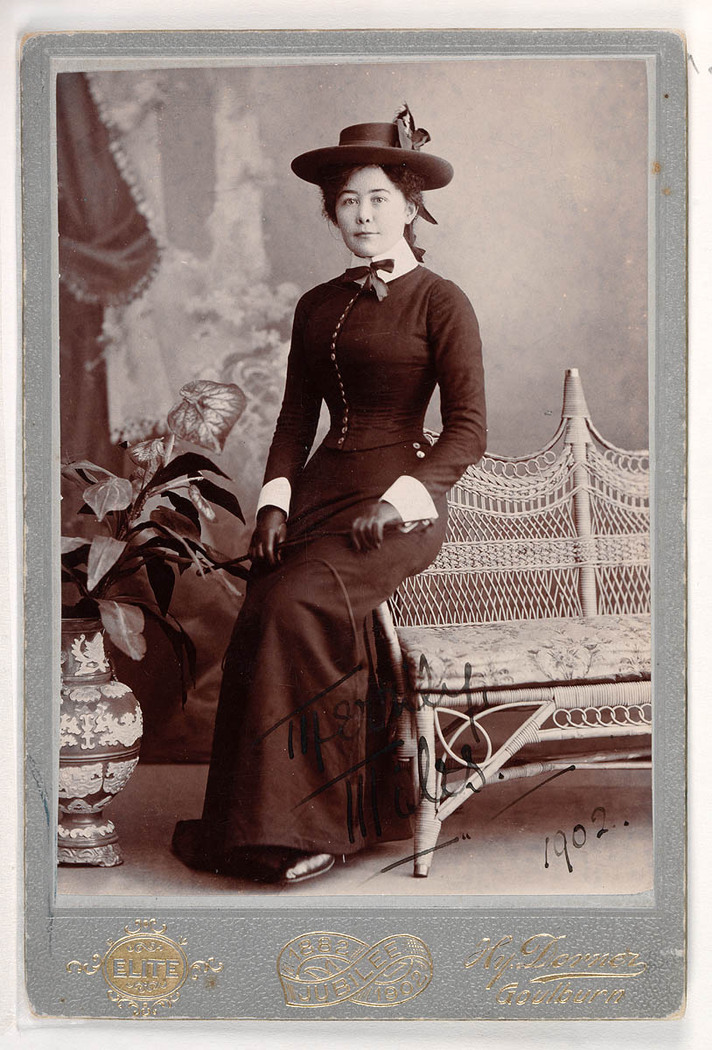
Starting in the 1930’s, more complex novels began to emerge. The writings of Christina Stead made her one of the greatest Australian novelists. Patrick White received the Nobel Prize in literature in 1973. His novels include The Tree of Man (1955) and Voss (1957).

Since the mid-1900’s, such poets as A. D. Hope, Judith Wright, and Chris Wallace-Crabbe have become well known. Dramatists Jack Davis, Hannie Rayson, and David Williamson have contributed to a distinctive Australian theater. A growing number of Indigneous authors have written works based in Aboriginal culture and experience. Their writings include autobiographical and biographical writings by Sally Morgan and Doris Garimara Pilkington, the poetry of Oodgeroo Noonuccal (born Kath Walker), plays by Ray Lawler, and books for young people by Boori Monty Pryor.
In the later 1900’s and early 2000’s, Australian writers have been highly successful internationally. Several novelists have received the Booker Prize, the United Kingdom’s best-known literary award. They include Thomas Keneally for Schindler’s Ark (known as Schindler’s List in the United States, Peter Carey for Oscar and Lucinda (1988) and a second time for True History of the Kelly Gang (2000), and Richard Flanagan for Narrow Road to the Deep North in 2014. Other important novelists of the late 1900’s and early 2000’s include Thea Astley, Christopher Koch, Shirley Hazzard, David Malouf, and Tim Winton. For more information on the literature of Australia, see Australian literature.
Painting.
Aboriginal rock art is one of the oldest continuous art traditions in the world, dating back at least 40,000 years. Experts believe that Aboriginal people may have been painting even earlier. Archaeologists have found pieces of ocher, a colored earth sometimes used for painting, on the floor of Australian caves. Some of this ocher is more than 30,000 years old. Aboriginal artists also painted on bark, using elaborate designs of human and animal figures. In the late 1930’s, a group of Aboriginal artists in central Australia developed a style of water-color landscape painting. The most famous of them was Albert Namatjira.

The first European painters included artists who recorded scientific and geographical information, beginning with the voyage led by the British navigator James Cook in 1768. Early artists provided colonists in Australia with portraits and landscapes to send to Britain.
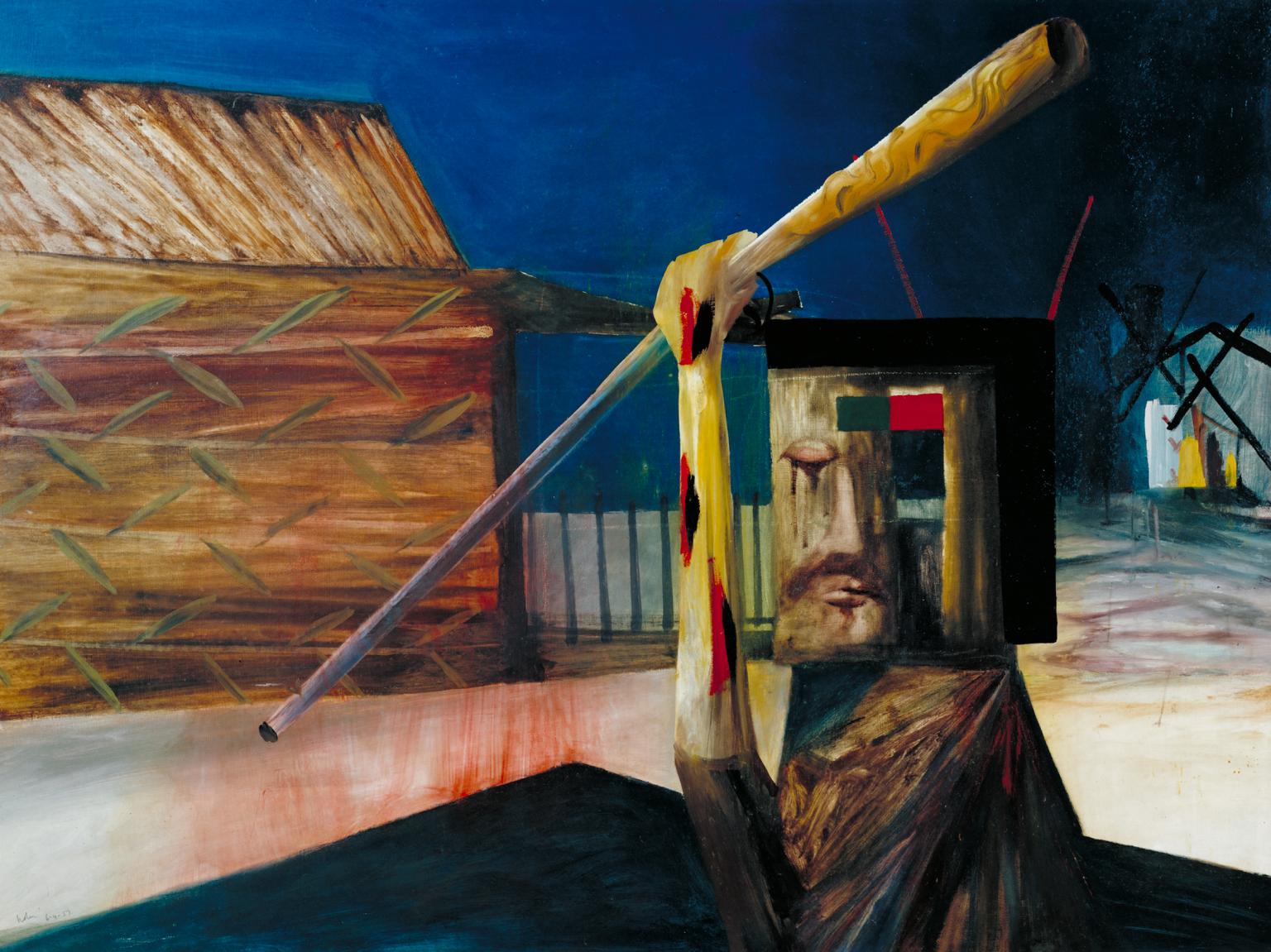
In the 1880’s, a group of Australian artists began to paint in the Impressionist style, showing the ever-changing effects of nature. They are sometimes referred to as the Heidelberg School, after Heidelberg, a suburban village near Melbourne where they worked. Leaders of this school included Charles Conder, Frederick McCubbin, Tom Roberts, and Arthur Streeton.
During the 1900’s, a number of Australian painters developed unique styles. The portrait painter William Dobell became famous for his revealing character studies. Russell Drysdale became known for his haunting pictures of the outback. Sidney Nolan created fantastic, dreamlike paintings based on themes from Australian folklore. During the middle and late 1900’s, paintings of the outback by Frederick Williams won admiration. The National Gallery of Australia in Canberra houses the country’s national art collection. The National Gallery of Victoria, in Melbourne, and the Art Gallery of New South Wales, in Sydney, also have major collections.

Music and dance.
Australia has a national opera company, Opera Australia, and a national ballet company, the Australian Ballet. State companies, such as the Sydney Dance Company and Opera Queensland, are well known. Each state capital has a professional symphony orchestra. A number of world-famous singers and composers were born in Australia. They include opera singers Marjorie Lawrence, Dame Nellie Melba, and Dame Joan Sutherland and composers Percy Grainger and Peter Sculthorpe. Modern composer Richard Meale is known for his stage and instrumental works, including the opera Voss (1986).

Theater and motion pictures.
Each of Australia’s state capitals has a permanent company of professional actors and actresses. Each company offers a yearlong season of classical and modern plays.
Australia was one of the first countries to develop a motion-picture industry. Australian filmmakers produced their first feature film in 1906, only three years after the first motion picture was made in the United States. The Australian film industry nearly died out after the late 1930’s because of competition from American and British movies. But Australian filmmaking revived during the late 1960’s. Today, Australian film and television production are high-profile export industries. Such motion-picture stars as Cate Blanchett, Russell Crowe, Mel Gibson, and Nicole Kidman have gained international acclaim for their work. The diverse films of directors Bruce Beresford, Baz Luhrmann, George Miller, and Peter Weir show the growing importance and creativity of the Australian filmmaking industry. Loading the player...
Russell Crowe
Architecture.
During the 1800’s, many public buildings and private houses in Australia were built in the Georgian or Victorian style of architecture. Both these styles originated in England. The Georgian style featured a simple square or rectangular design and classical ornaments, especially columns. The Australian version of the Georgian style introduced the veranda as a basic element of the country’s architecture. Most Victorian buildings had an irregular shape and elaborate ornaments, such as spires and pointed domes. The railings and roof supports for Victorian verandas were made of showy iron grillwork. There is an active state-supported movement to preserve Australia’s historic buildings. 
Today, Australia’s architecture is international in style. The large cities have towering structures of concrete, steel, and glass similar to those in other countries. However, some modern Australian architecture is highly unusual. The Sydney Opera House, a spectacular structure with saillike roofs, has attracted worldwide attention since its completion in 1973. It was designed by the Danish architect Jørn Utzon.
The land

Australia is surrounded by water, like an island. But geographers class it as a continent rather than as an island because of its great size. It is sometimes referred to as an “island continent.”

Australia covers about 5 percent of Earth’s land area. The island of Tasmania, which lies about 130 miles (209 kilometers) south of the Australian mainland, is considered part of the continent. Tasmania was part of the mainland until the ocean rose over a period of several thousand years at the end of the last ice age. Tasmania became a separate island about 12,000 years ago.
Most of Australia is low and flat. The highest and most mountainous land lies along the east coast. Nearly all the land west of this region—about 90 percent of the total land area—consists of level plains and plateaus.
Land regions.
Australia can be divided into three major land regions. They are, from east to west: (1) the Eastern Highlands, (2) the Central Lowlands, and (3) the Western Plateau.
The Eastern Highlands
include the highest elevations in Australia. The region extends from Cape York Peninsula in extreme northeastern Australia to the south coast of Tasmania. A low plain bordered by sandy beaches and rocky cliffs stretches along the Pacific coast. More rain falls on this coastal plain than anywhere else in the country. The southeastern section of the plain, from Brisbane to Melbourne, is by far the most heavily populated part of Australia. 
The Eastern Highlands are sometimes called the Great Dividing Range because their slopes divide the flow of the rivers in the region. Rivers that flow down the eastern slopes empty into the ocean. Rivers that run down the western slopes flow to the Central Lowlands. However, the highlands are not a single range, nor are they especially mountainous. They consist mainly of high plateaus that are broken in many places by gorges, hills, and low mountain ranges.
Many of the plateaus in the Eastern Highlands have fertile soils and are used as cropland. Grass or forests cover other plateaus. At one time, forests also covered much of the coastal plain. Except in the far north, however, people have cleared most of the coastal forests for farms and cities. See Great Dividing Range.
The Central Lowlands
have the lowest elevations in Australia. The region is generally flat. Many rivers flow through the lowlands after heavy rains. Rains are infrequent, however, except along the region’s north and south coasts and near the Eastern Highlands. Riverbeds farther inland are dry most of the year.
Farmers in the southern part of the Central Lowlands grow wheat. Most of the rest of the region is too dry or too hot for most kinds of crops. However, much of the land is covered with coarse grass or shrubs and is used to graze livestock. The west-central part of the region is a barren, sandy desert. Lake Eyre, the lowest point in Australia, lies 52 feet (16 meters) below sea level along the southern edge of this desert. 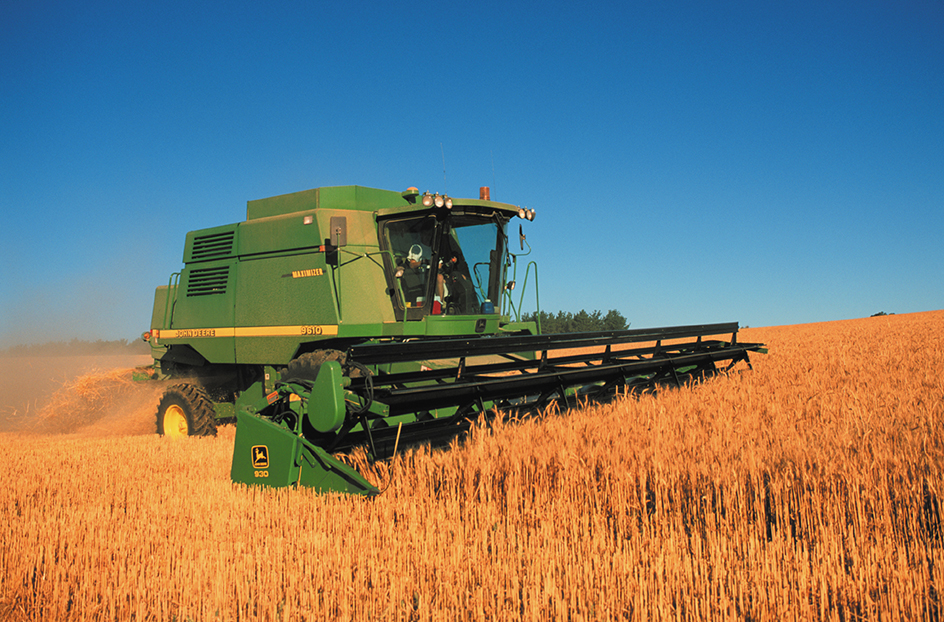
The region has no large cities. The two biggest cities—Mount Isa and Broken Hill—have fewer than 30,000 people each. Both cities are mining centers.
The Western Plateau
covers the western two-thirds of Australia. The region has a higher average elevation than the Central Lowlands. However, most of the land is flat, as in the lowlands.
Deserts cover the central part of the Western Plateau. Except in the south and northeast, the deserts gradually give way to land covered by grass and shrubs. Farmers use much of this land to graze livestock. Low mountain ranges rise above the plateau in the grazing areas. Rainfall is heaviest in the extreme north and southwest. These areas have most of the region’s cropland. A vast, dry, treeless plateau called the Nullarbor Plain extends about 400 miles (640 kilometers) along the southern edge of the region. The name Nullarbor comes from the Latin words nulla and arbor, which mean no tree. 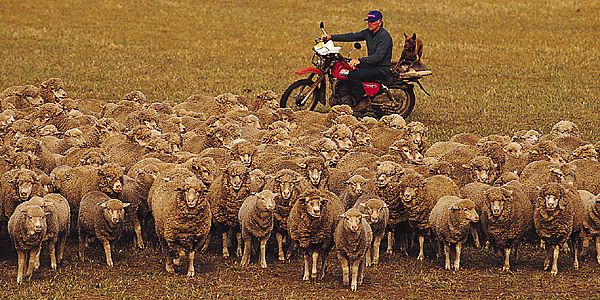
The Western Plateau region has two large cities, Adelaide and Perth. Both cities lie on coastal plains, Adelaide in the extreme southeastern part of the region and Perth in the extreme southwest.
Mountains.
Australia’s highest mountains rise in the Australian Alps in the extreme southern part of the Eastern Highlands. The Australian Alps consist of several ranges. The Snowy Mountains are the best known. Australia’s highest peak, Mount Kosciuszko, rises 7,310 feet (2,228 meters) above sea level in the Snowy Mountains. Mount Kosciuszko and other tall peaks in the Australian Alps are snow covered in winter and attract many skiers.
The mountain ranges in the Western Plateau are much lower than those in the Australian Alps. The highest peaks are in the MacDonnell and Musgrave ranges in central Australia. Uluru (also known as Ayers Rock) is a huge, loaf-shaped rock formation just south of the MacDonnell Ranges in Uluru-Kata Tjuta National Park. It is a popular tourist attraction and a sacred area for Australia’s Aboriginal peoples. 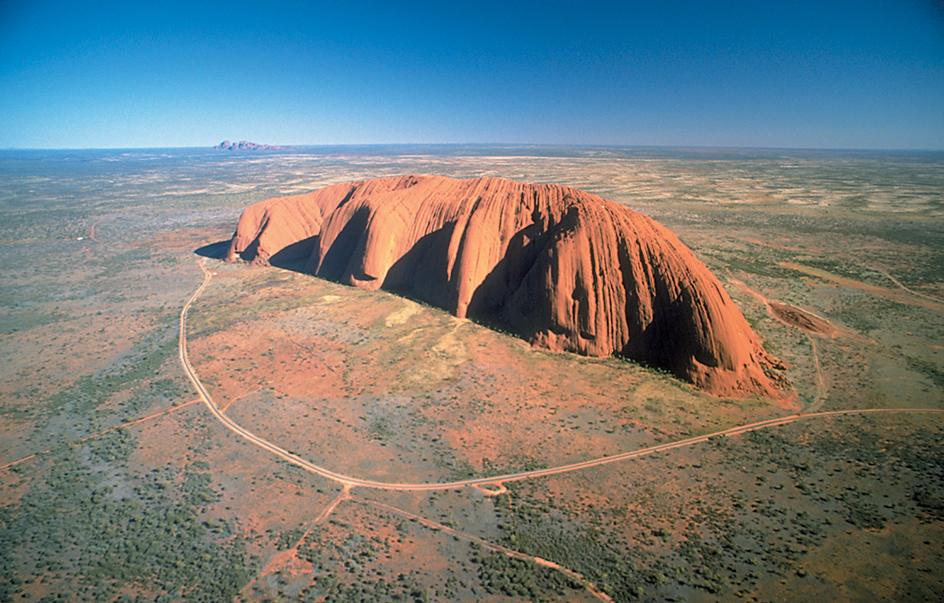
Deserts
cover about one-third of Australia. The country has four major deserts. The Simpson Desert lies along the western edge of the Central Lowlands. The three other deserts—the Gibson, Great Sandy, and Great Victoria deserts—cover the central part of the Western Plateau. All the deserts except the Gibson consist of swirling sands, which often drift into giant dunes. Some dunes measure more than 200 miles (320 kilometers) long. The Gibson Desert lies outside the path of the general wind direction and of wind-blown sands. Its surface consists of a mass of small stones and pebbles.
Rivers
are one of Australia’s most vital resources. Rivers provide the towns and cities with drinking water, and they supply farmers with much-needed water for irrigation. However, many of Australia’s rivers are dry at least part of the year. They fill with water only during the rainy season. The rainy season occurs in summer in northern Australia, and in winter in southern Australia. Dams and reservoirs on all the largest rivers store water for use during the dry season. 
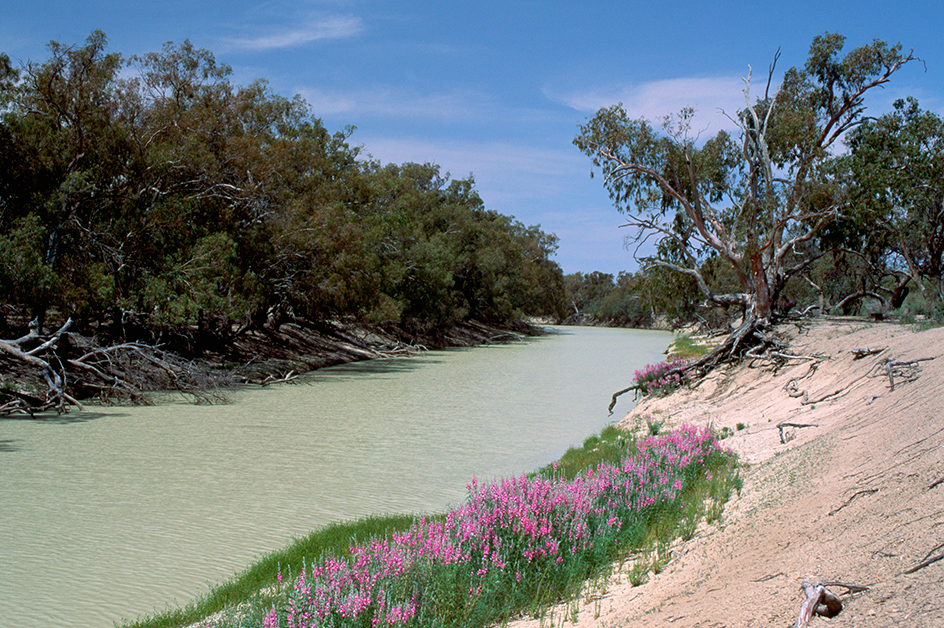
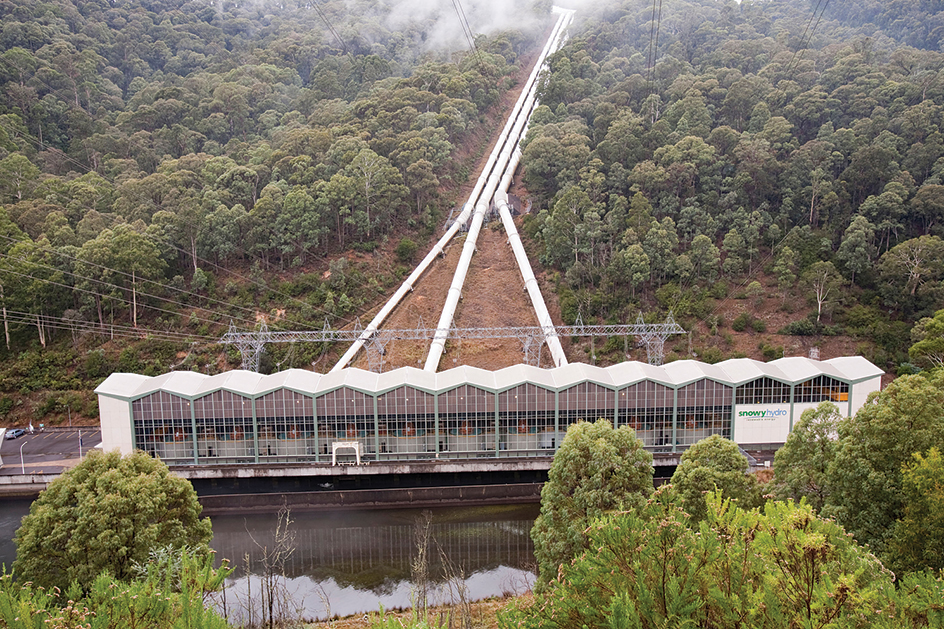
The Murray River is Australia’s longest river. The Murray starts in the Australian Alps in Victoria and winds west 1,558 miles (2,508 kilometers). Its mouth lies southeast of Adelaide in South Australia. However, drought and irrigation demands have at times caused the mouth of the river to dry up. During the southern dry season, the Murray is fed by the country’s second longest river, the Darling. The Darling River begins at a junction of the Barwon and Culgoa rivers in New South Wales. It flows southwest 960 miles (1,545 kilometers) to the Murray. The Darling is dry along most of its course in the winter. Its flow increases in summer, when the northern and central parts of the Eastern Highlands receive most of their rain.
Australia’s biggest water conservation project is the Snowy Mountains Scheme. It consists of an extensive system of dams, aqueducts, and tunnels. Some of the aqueducts and tunnels carry water from melting snows in the Snowy Mountains to nearby dams. The dams store the water. Other aqueducts and tunnels channel water from the dams into the Murray and Murrumbidgee rivers. The increased flow of water in these rivers is used to irrigate cropland in New South Wales and Victoria. This irrigation is crucial to agriculture in many parts of Australia. However, it has also caused serious problems of salinization (accumulation of salt in the soil). The salts in the soil have been brought to the surface by the water, making the land unsuitable for crops.
Hydroelectric plants at the dams supply New South Wales, Victoria, and the Capital Territory with a little of their electric power. Tasmania draws almost all of its electric power from hydroelectric facilities.
Lakes.
Australia’s only large permanent lakes have been artificially created. They include Lake Argyle in Western Australia and Lake Gordon in Tasmania. Both are reservoirs for water conservation projects.
Most of Australia’s natural lakes are dry for months or years at a time. Dry lakes called playas are common in South Australia and Western Australia. Most of the time, a playa is simply a dry bed of salt or clay. It fills with water only after heavy rains. Many playas remain dry for years. The largest playas are in South Australia. They include Lake Eyre, Lake Torrens, Lake Gairdner, and Lake Frome.
Underground water.
Australia has fairly plentiful underground water. But most of it is too salty for people to drink or for use as irrigation water. In many areas, however, the water is not too salty for livestock to drink. On many large cattle and sheep stations, underground wells supply all the drinking water for the animals.
Much of Australia’s underground water is artesian water. Artesian water is trapped under such great pressure that it gushes to the surface through any opening. The water can thus be brought to the surface merely by digging a well. It does not have to be pumped.
Australia’s chief source of artesian water is a vast underground rock formation called the Great Artesian Basin. The basin extends across much of eastern Australia. Other artesian basins lie near the northwest, west, and south coasts. Most of the water in the Great Artesian Basin is quite salty and so can be drunk only by livestock. In general, the water in the coastal basins has less salt. Farmers use some of this water for irrigation. Adelaide, Perth, and many smaller communities get some drinking water from coastal basins.
The Great Barrier Reef
is the world’s largest coral reef and one of Australia’s most popular tourist attractions. Although its name suggests one reef, the Great Barrier Reef is a chain of thousands of individual reefs. The reefs and islands extend in a nearly unbroken chain along Australia’s northeast coast. The reefs are composed of about 400 species of corals of many shapes and colors. The waters around the Great Barrier Reef are warm the year around. The warm waters and the beauty of the coral formations attract swimmers and skin divers. The Great Barrier Reef is protected because of its environmental importance. It is one of Australia’s 14 World Heritage areas, areas on an international registry of sites that have great natural or cultural value. Others include Kakadu National Park and Uluru-Kata Tjuta National Park, both in the Northern Territory. See World Heritage List. 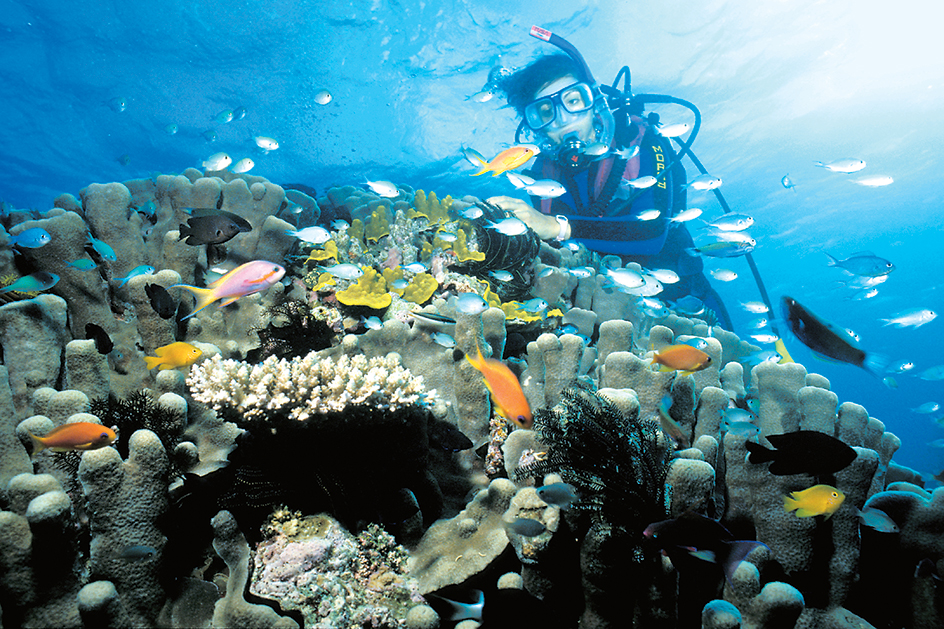
Climate
The northern third of Australia lies in the tropics and so is warm or hot the year around. The rest of the country lies south of the tropics and has warm summers and mild or cool winters.
In winter, many parts of the south have occasional frosts. But the Australian Alps and the interior of Tasmania are the only areas of the country where temperatures remain below freezing for more than a day or so at a time.
Australia receives most of its moisture as rain. Snow falls only in Tasmania and the Australian Alps. About two-thirds of the country is arid or semiarid and receives less than 10 inches (25 centimeters) of rain a year. The deserts are too barren even for the grazing of livestock. Much of the rest of Australia has less than 20 inches (51 centimeters) of rainfall annually. Few crops can be grown in these regions without irrigation. The heaviest rainfall occurs along the north, east, southeast, and extreme southwest coasts.
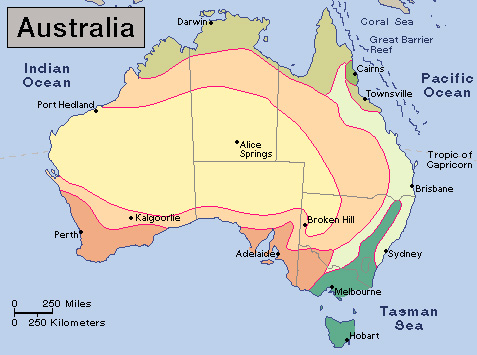
The east coast of Queensland is the wettest part of the continent. Some places along this coast receive as much as 150 inches (381 centimeters) of rain a year. Parts of the southeast coast and of Tasmania are the only areas of the continent that get uniform amounts of rainfall throughout the year. Rainfall is seasonal throughout the rest of Australia.
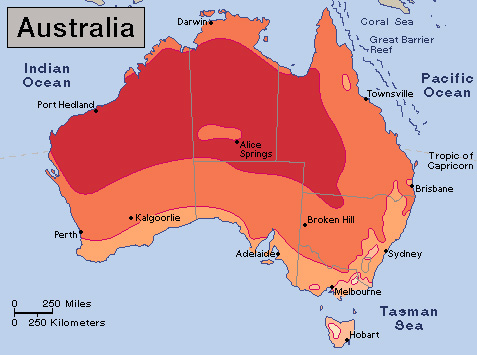
Australia lies south of the equator, and so its seasons are opposite those in the Northern Hemisphere. The southern part of the continent has four distinct seasons. Winter, the wettest and coolest season in Australia, lasts from June to August. Summer, the hottest and driest season, lasts from December to February.
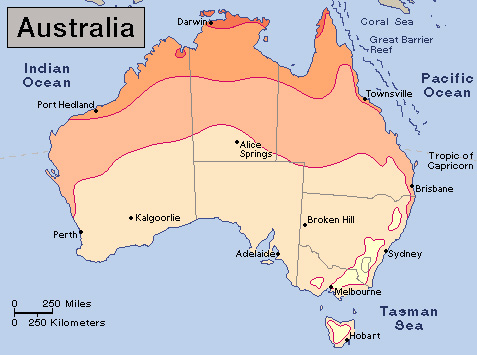
Tropical northern Australia has only two seasons—a wet season and a dry one. The wet season corresponds with summer and lasts from November to April. The dry season corresponds with winter and lasts from May to October.
The wet season brings heavy downpours and violent storms, especially on Australia’s north coast. In 1974, for example, a cyclone almost leveled the northern coastal city of Darwin. Floods plague many parts of Australia during the wet season. However, droughts are usually a far more serious problem. Nearly every section of Australia has a drought during the country’s annual dry season.
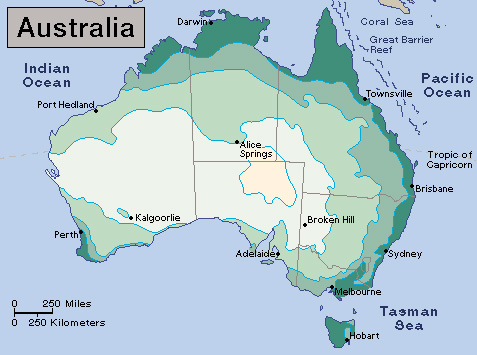
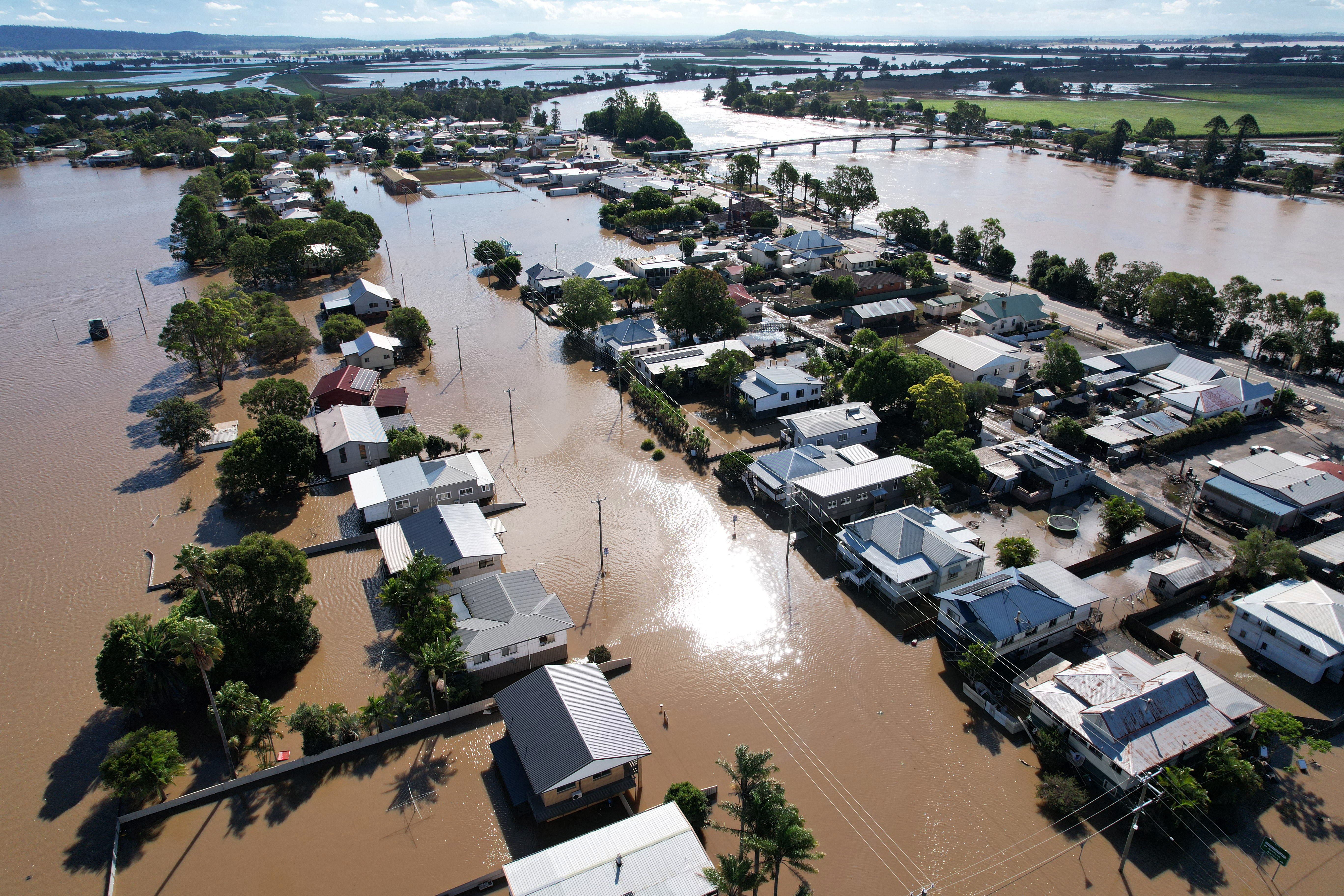
Water conservation measures prevent these droughts from doing serious harm in most cases. However, Australia also has periods when little or no rain falls even during the wet season. These droughts can cause severe water shortages.
Animals and plants
Native animals.
At one time, all the continents were part of one huge land mass. Australia became separated from this land mass about 200 million years ago. As a result, its animals developed differently from those on other continents. Australia’s most famous native animals include kangaroos, koalas, wallabies, wombats, and other marsupials. Marsupials are mammals that give birth to tiny, poorly developed offspring. In most species, the babies mature in a pouch on the mother’s abdomen. Australia has about 200 species of marsupials, all of which have pouches. One or more species live in every part of the country.
Loading the player...
Koala climbing a tree
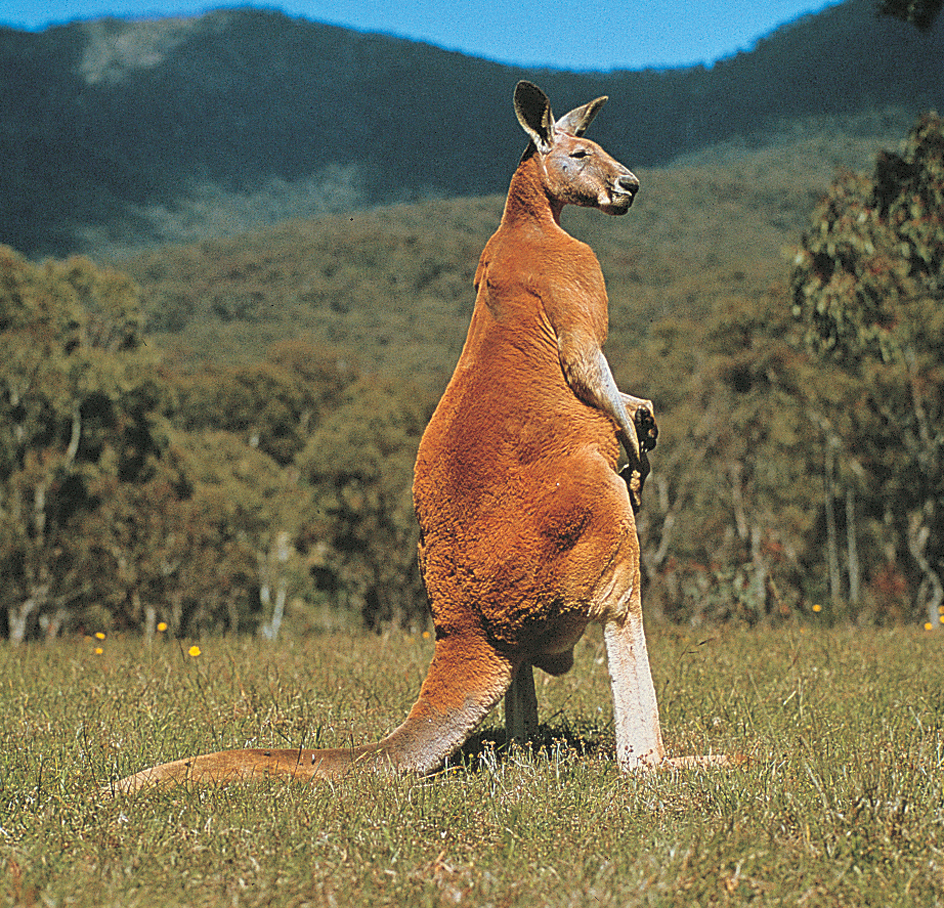
The platypus and the echidna are among the strangest Australian animals. They are the only mammals that hatch their young from eggs. Platypuses live only in Australia. Echidnas live in Australia and on New Guinea and a number of other neighboring islands.
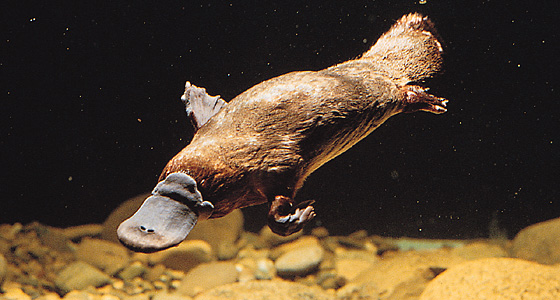
Australia has about 700 species of native birds. They include the world’s only black swans and about 60 kinds of cockatoos, parakeets, and other parrots. Two large flightless birds, the emu and the cassowary, are also native to Australia. The kookaburra, a member of the kingfisher family, is one of Australia’s best-known birds. Its loud, harsh call is a familiar sound in residential areas.
Australia has about 140 species of snakes and about 500 species of lizards. Most of the snakes are poisonous. In fact, taipans and tiger snakes are among the deadliest groups of snakes in the world. All the lizards are nonpoisonous.
Native plants.
Two main kinds of native plants, acacias and eucalyptuses, dominate Australia’s landscape. They are the most common shrubs in the dry lands and the most common trees in the moister areas. Acacias, which Australians call wattles, bear their seeds in pods. Australia has about 700 species of acacias. Many of them have brightly colored flowers. Common shrubby species include the mulga and the myall. The silver wattle and the blackwood are tall trees. 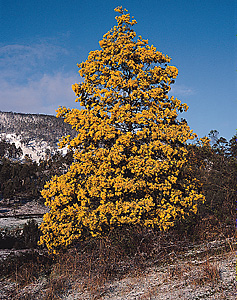
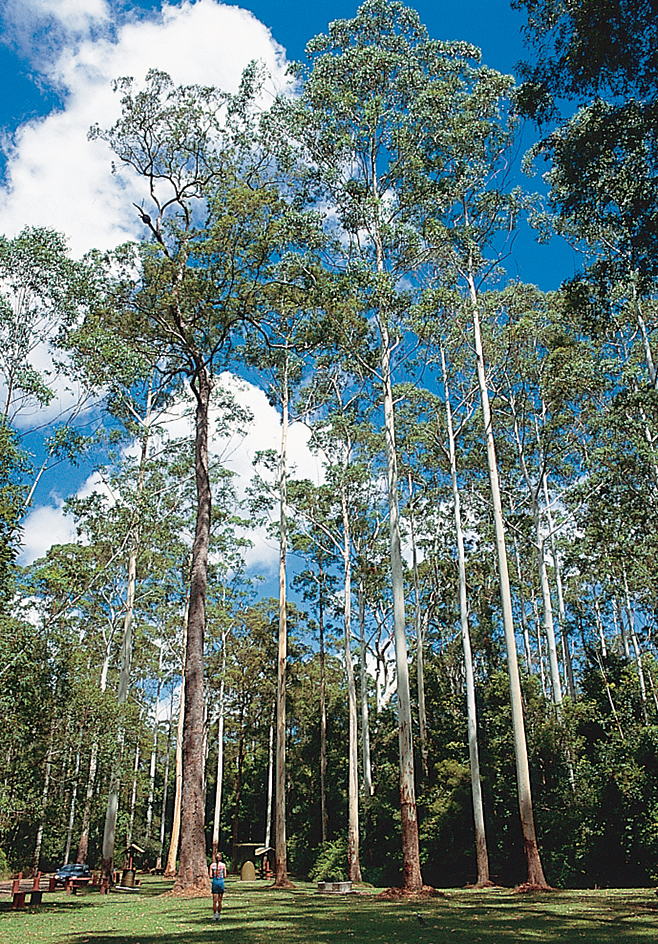
Eucalyptuses—or eucalypts, as they are known in Australia—are the most widespread plants in the country. Australia has about 500 species of eucalyptuses. Most species have narrow, leathery leaves. The leaves contain a fragrant oil, which gives the plants a noticeable odor. The oil makes the trees burn spectacularly in bushfires. The oil can heat up and burst into flames even before the fire reaches the tree.
Scrubby eucalyptuses, which are also known as mallee scrub, cover large areas of the interior. Eucalyptus trees, which Australians call gum trees or gums, are the tallest trees in the country and among the tallest in the world. Two species, the mountain ash and the karri, may grow to about 280 feet (85 meters). Eucalyptuses once grew only in Australia and on a few islands to the north. However, eucalyptuses now grow in many other warm areas, including California, Hawaii, Africa, and countries bordering the Mediterranean Sea. See Eucalyptus.
Palms and trees that resemble palms grow in many parts of Australia. Grass trees are palmlike trees of the western dry lands. They are related to the yucca trees of the American Southwest. Macrozamia trees grow throughout Australia. They have palmlike or fernlike leaves and bear cones, as needleleaf trees do. Australia has few native needleleaf trees, other than kauri pines and bunya pines. Shrubs called saltbushes are common in the dry grazing areas of southern Australia. They are so named because their leaves have a salty taste. The leaves provide excellent feed for livestock.
Australia has thousands of wildflowers. Many of them are desert species whose seeds lie buried until brought to life by a heavy rain. Then, for a few days or weeks, the desert bursts into bloom with flowers of every color.
Introduced species.
The only mammals that lived in Australia before the first people lived there were bats, echidnas, mice, platypuses, rats, and the various kinds of marsupials. Scientists believe that Aboriginal people brought a type of dog known as a dingo to Australia. Some dingoes escaped into the wild. Today, their descendants are Australia’s chief beasts of prey. European settlers introduced into Australia many familiar mammals, including cats, cattle, deer, foxes, goats, hogs, horses, rabbits, and sheep. They also introduced such animals as camels and water buffaloes, various kinds of birds, and many species of plants.
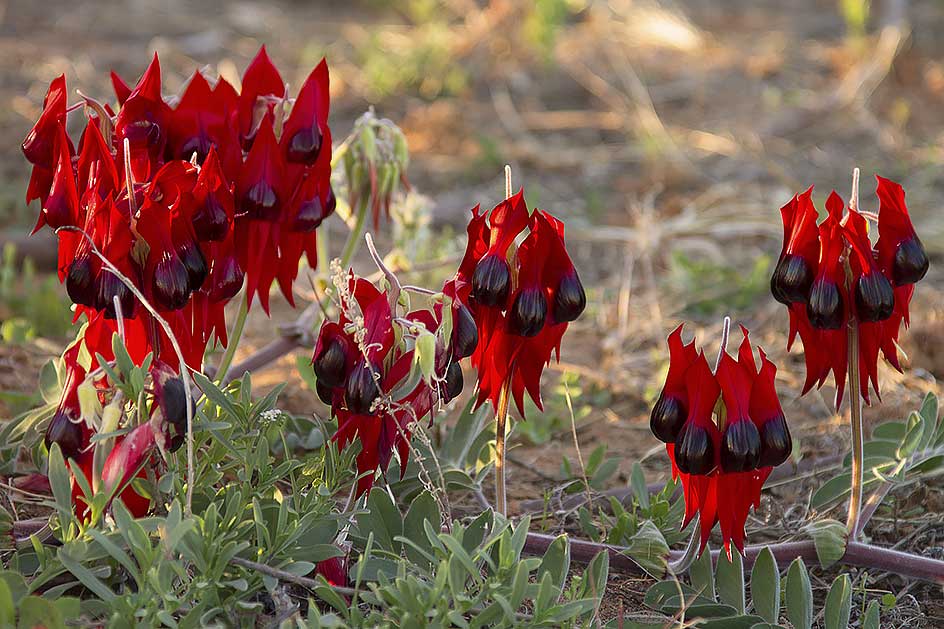
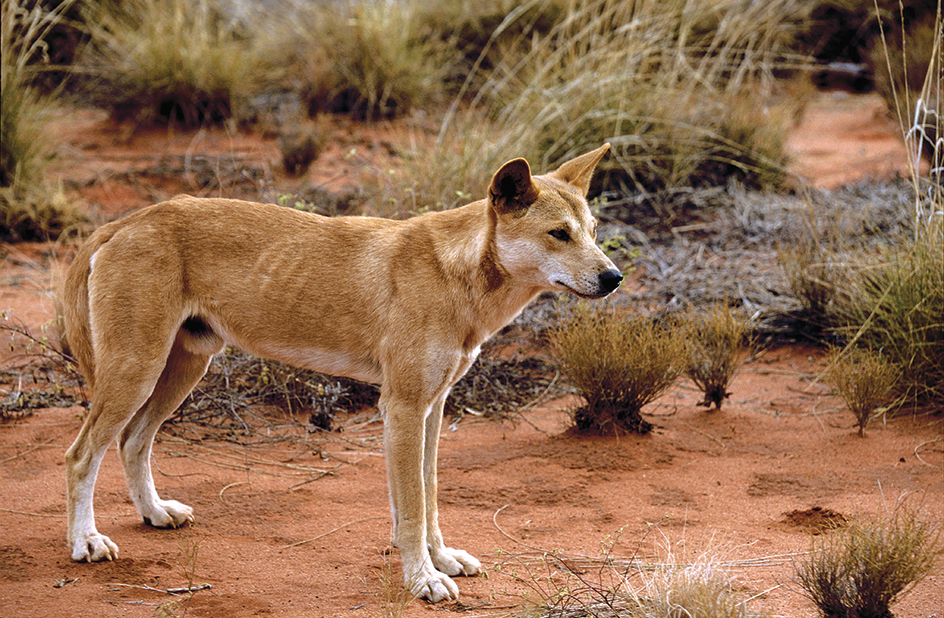
Camels, cane toads, water buffaloes, and certain other introduced species have become wild and are pests. These include some domestic cats that have gone wild and pose a great risk to native birds and small animals. In some cases, species have had to be exterminated. Wild rabbits, for example, caused extensive damage to crops and grazing lands. In the 1950’s, Australian officials attempted to wipe them out with a deliberately introduced disease, myxomatosis. This policy was successful until the rabbits developed immunity (natural protection from the disease). In the mid-1990’s, scientists released a new virus that has been more successful in controlling the number of rabbits.
Economy
Australia is one of the world’s rich, developed countries. Most developed countries have become rich through the production and export of manufactured goods. Australia’s wealth, however, has come chiefly from farming and mining.
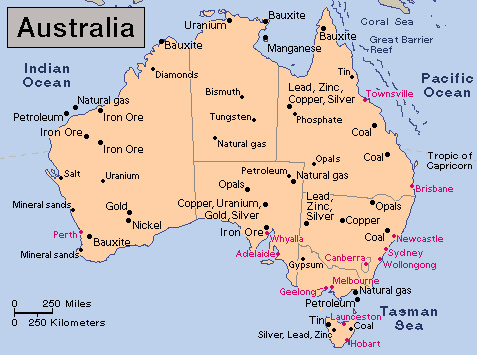
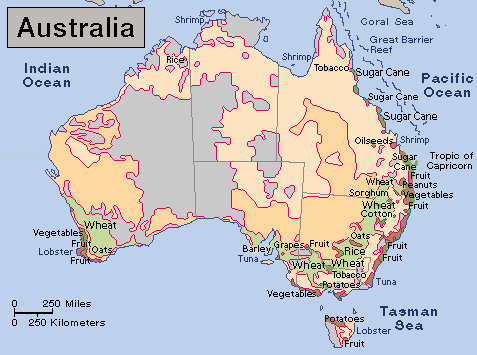
The processing of farm and mineral products makes up a major part of Australia’s manufacturing industry. For many years, manufacturing was the leading employer in Australia. But during the late 1900’s, manufacturing declined in importance, while service industries increased in importance.
The nation relies on its farms and mines to produce goods for export. By selling farm products and minerals abroad, Australia earns the export income that most other developed countries earn from the sale of manufactured products. However, only part of Australia’s export income goes to the farmers and mining companies that produce the goods originally. Much of it goes to firms that process and distribute the goods. Thus, Australia’s agricultural and mineral exports benefit the economy as a whole and enable many Australians to have a high standard of living.
Australia has traditionally been handicapped by a lack of capital—that is, money to finance business and industrial development. As a result, the country has had to borrow capital from other nations and has become heavily indebted to them. American, British, Japanese, and other foreign investors own or control many mining companies, factories, and other businesses in Australia.
Service industries
provide about four-fifths of Australia’s jobs and make up about two-thirds of Australia’s gross domestic product—the total value of goods and services produced within the country annually.
Community, social, personal, business, and financial services make up the leading service industry group in terms of both employment and gross domestic product. Trade, restaurants, and hotels combine to employ about a fifth of Australia’s total workforce. Transportation and communication is also important.
Manufacturing.
Unlike most other developed countries, Australia imports more manufactured goods than it exports. Australian factories produce many of the consumer goods, such as processed foods and household articles, that the people require. But the nation has to import most of its producer goods—that is, factory machinery, construction equipment, and other goods used in production. Iron and steel are the chief exceptions. Australia’s iron and steel industry produces enough of the metals to mostly meet the needs of other industries. Australia’s factories depend heavily on foreign capital.
Most of Australia’s factories specialize in assembly work and light manufacturing. Many plants process farm products or minerals for export. The leading manufactured products include machinery; metals, including iron and steel; petroleum, coal, and chemical products; processed foods and beverages; and transportation equipment. New South Wales and Victoria are the chief manufacturing states. Together, these two states produce over half of the country’s manufactured goods and employ over half of the factory workers. Most of the factories operate in and around Sydney and Melbourne.
Mining.
Australia has rich mineral resources. But many of the deposits lie in the dry areas, far from major settlements. Such deposits are extremely expensive to mine. Workers must construct roads and railways to the mining sites. Some settlements have been built near mines so that the miners and their families have housing. The costs of mining development in Australia are so high that the mining industry depends heavily on foreign capital. Foreign investors own or control much of the mining industry. In 1975, the Australian federal government established a general rule that at least 50 percent of every major new mining operation in the country should be owned by Australian investors. However, the government does not strictly enforce this rule if the Australian capital needed for the mining operation is unavailable. 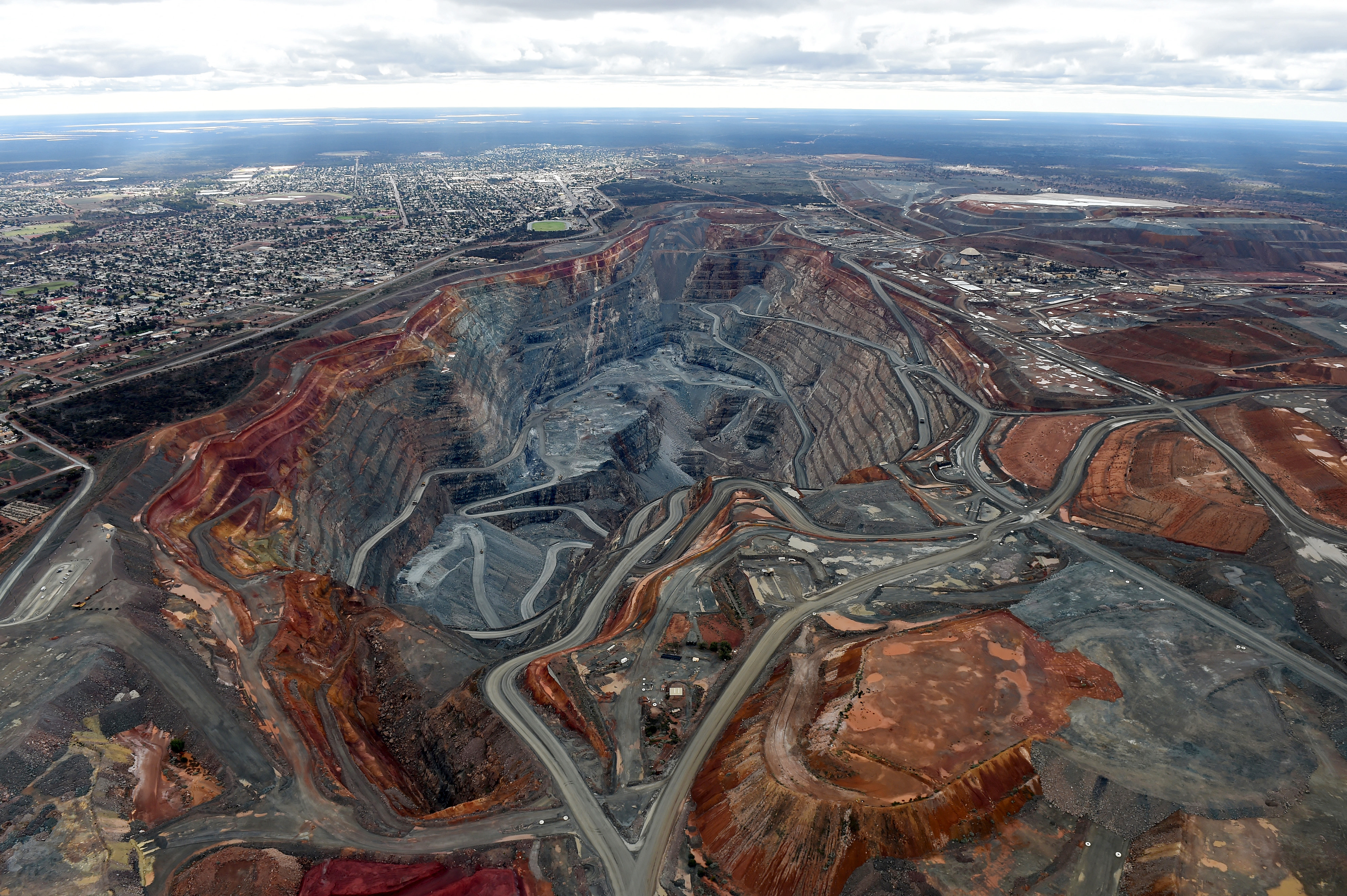
Australia began to develop its mineral resources during the 1800’s. By the end of the century, it was exporting large amounts of copper, gold, lead, silver, tin, and zinc. These minerals remained the chief products of the mining industry until the mid-1900’s. During the 1950’s, geologists discovered huge deposits of bauxite, coal, and iron ore in Australia. They discovered manganese, natural gas, nickel, and petroleum during the 1960’s.
Australia has become one of the world’s major mining countries. It ranks first in the production of iron ore and zirconium. The country is a leading producer of bauxite, coal, copper, diamonds, gold, lead, manganese, nickel, silver, tin, and zinc. Nearly all the world’s high-quality opals are mined in Australia.
New South Wales, Queensland, and Western Australia are the leading mining states. Western Australia produces most of the gold, iron ore, and nickel and all of Australia’s diamonds. Queensland is the chief producer of lead and silver. It also produces much of Australia’s coal. New South Wales mines coal, copper, gold, and zinc. Most of the manganese comes from the Northern Territory and Western Australia. South Australia mines copper, gold, and iron ore. Tasmania produces copper, gold, and zinc. Offshore fields along the northwest coast of Western Australia are Australia’s main source of petroleum. Victoria is also a major petroleum producer. Natural gas is produced in Victoria and the northwest coastal shelf of Western Australia. The country is among the world’s largest producers of uranium. The richest uranium deposits lie in the Northern Territory and South Australia.
Agriculture
in Australia is highly mechanized, requiring minimal human labor. Only a small percentage of the country’s workers are farmers. However, they produce nearly all the food the people need. Agriculture provides less than 5 percent of Australia’s gross domestic product.
Farmland covers about half of Australia. However, most of this land is dry grazing land. Farmers grow crops on less than 10 percent of the farmland, but they use modern agricultural methods to make the cropland highly productive. They irrigate about 5 percent of the cropland.
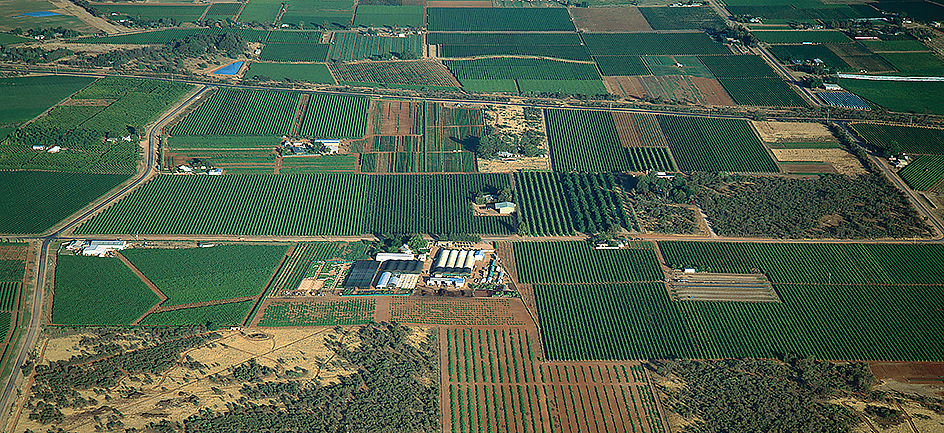
Australia’s leading farm products include beef cattle, dairy products, and wheat. Leading crops include barley, cotton, grapes, potatoes, and sugar cane. Farmers also raise chickens for both meat and eggs, hogs, and sheep for both meat and wool. Australia is one of the world’s largest producers of barley, wheat, and wool. Another rapidly growing industry is winemaking. Australia is one of the world’s leading wine-producing nations. All the Australian states produce wine, but New South Wales and South Australia produce the best vintages. In regions suitable for growing grapes, winemakers are turning old farms and orchards into vineyards to produce grapes for wine. 
Farmers raise sheep and cattle in all the Australian states. New South Wales, South Australia, Victoria, and Western Australia together raise almost all of the country’s sheep and produce almost all of its wool. New South Wales and Queensland are Australia’s leading beef cattle producers. Victoria is the leading producer of dairy products. Farmers grow wheat in all areas of the country that have adequate rainfall and climate. But production is heavily concentrated in New South Wales and Western Australia. Farms on the east coast of Queensland grow bananas, pineapples, sugar cane, and other crops that need a wet tropical climate. Such fruit as apples and pears are common in all the states. New South Wales and South Australia are the leading orange-producing states.
Forestry and fishing.
Forests cover about 15 percent of Australia, mostly in the Eastern Highlands and moist coastal areas. The northeast coast has tropical rain forests. The vast majority of Australia’s forest trees are eucalyptuses. Industries use the wood of some eucalyptus species for making paper and such items as floorboards and furniture. But eucalyptus wood is too hard for most other purposes, including most types of housing construction. Therefore, tree farms plant imported species of softwoods. Monterey pines, which originally came from California, have become one of Australia’s most important timber trees.
Although Australia is surrounded by water, its fishing resources are limited. Thousands of species of fishes live in the coastal waters, and Australia has developed a small but profitable fishing industry. The industry earns most of its income from the catch of shellfish, especially abalones, lobsters, prawns, and scallops. The fishing fleet also brings in fairly large catches of sardines and tuna. Australia exports much of the shellfish catch. Divers collect some pearls from oysters. Aquaculture, the commercial raising of plants and animals that live in water, is a growing industry in Australia. Australia’s aquaculture industry raises oysters for pearls and for food, as well as salmon and tuna.
Tourism.
Australia has a variety of tourist attractions. They include wildlife sanctuaries, sandy beaches, the Great Barrier Reef, the Australian Alps, Uluru, and numerous points of historical interest. Millions of foreign tourists visit Australia each year. Tourism aids the economy, especially the service industries, such as retail trade, restaurants, and hotels. 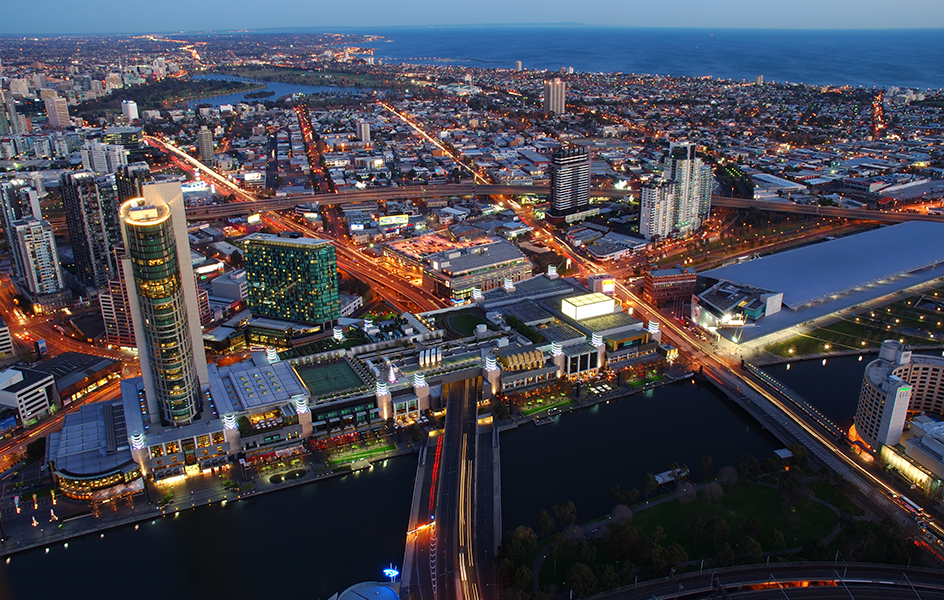

Distance and cost have been the major obstacles to growth of Australia’s tourist industry. Australia is about twice as far from North America and Europe as North America and Europe are from each other, so travel to Australia is costly for North American and European vacationers. About half of Australia’s visitors come from less distant places, especially New Zealand and other Pacific islands, China, Japan, and Southeast Asia. These places are also the ones most visited by Australians, although many Australians also visit Europe and North America.
International trade.
Farm products, minerals, and other raw materials are important to the nation’s economy. Australia exports about as much as it imports. Important exports include alumina, beef, coal, copper, gold, iron ore, petroleum products, wheat, and wool. Australia imports mainly manufactured goods. Automobiles, electrical appliances, industrial machinery, petroleum products, and pharmaceuticals (medicinal drugs) are leading import products. China and Japan are Australia’s leading trade partners. Other important trade partners include Germany, Malaysia, New Zealand, Singapore, South Korea, Thailand, and the United States.
Transportation.
Automobiles are the chief means of passenger transportation in Australia. Nearly every family owns a car and uses it for most local travel. Paved roads link the state capitals and the largest inland cities. Many roads in the outback are unpaved.
Adelaide, Brisbane, Cairns, Darwin, Melbourne, Perth, and Sydney have large international airports. Air transportation is particularly important in the outback. A private, nonprofit organization called the Royal Flying Doctor Service of Australia flies emergency medical help to many outback areas. The government of the Northern Territory provides aerial medical services to the northern part of the territory. 
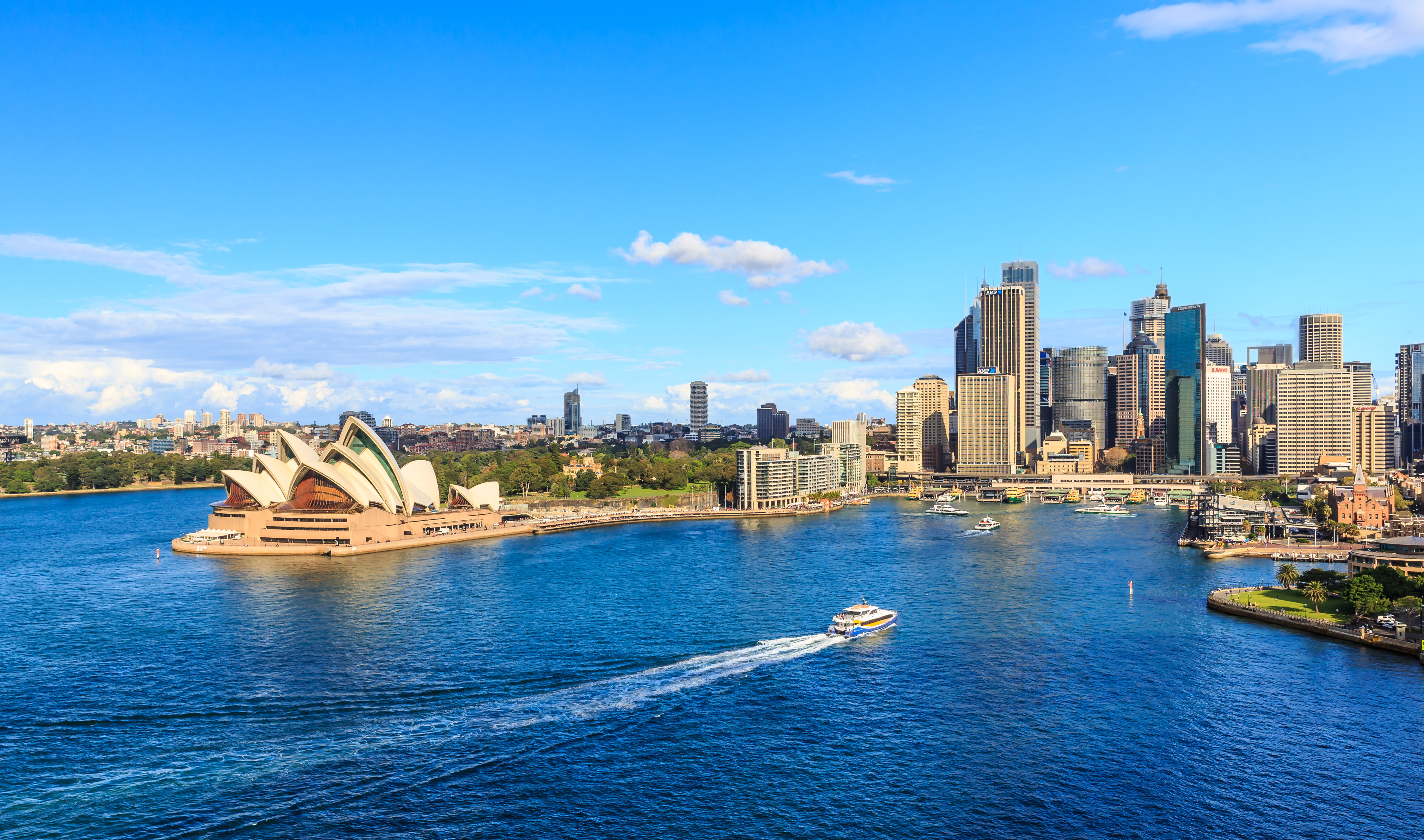
Trucks, railroads, and ships haul most of Australia’s intercity freight. The trucking industry is mainly privately owned. Australia’s main-line railroads were all publicly owned until the late 1900’s, but many are now privately owned. Rail lines link Darwin, Kalgoorlie, Melbourne, Sydney, and many other cities. The main-line railroads chiefly haul farm goods and minerals from the producing areas to the coastal cities and ports. In addition to the main rail lines, Australia has several small private railroads. These lines largely haul minerals from out-of-the-way mines to the main-line railroads. Sydney and Melbourne have extensive commuter rail systems.
Ships carry large amounts of minerals between Australian coastal ports, and they haul nearly all the country’s overseas freight. However, Australia has only a small merchant fleet. Foreign vessels carry most of the nation’s intercoastal freight and almost all its overseas cargo. The busiest eastern ports include Brisbane, Geelong, Melbourne, Newcastle, Port Kembla, and Sydney. Dampier, Fremantle, and Port Hedland are among the busiest ports in Western Australia. Adelaide also has a large port.
Communication.
Australia’s postal and telephone systems are part or fully owned by the federal government and operated by independent government agencies (see Overland Telegraph). The Australian Postal Corporation runs the postal system. The telephone system was fully government owned until the 1990’s. However, the telecommunications industry now operates in a fully competitive market. Telstra, a partially government-owned company, is the biggest operator. Nearly every Australian household has a telephone. Both Internet and mobile phone usage have increased rapidly since the mid-1990’s. In the remotest parts of the outback, many people use two-way radios in place of telephones.

Almost all Australian families own one or more television sets and radios. Commercial broadcasters own and operate many radio stations and free TV stations. Almost all the rest are owned and financed by the federal government and operated by the Australian Broadcasting Corporation (ABC), an independent government agency.
Almost all cable and satellite TV is privately owned. The Special Broadcasting Service (SBS) is a public broadcaster that receives most of its funding from the federal government. It provides radio, television, and online services in dozens of languages.
Australia has experienced rapid expansion of new electronic and telecommunications technologies, in industry, government, education, and private household use. Most Australian homes have computer and Internet service.
Australia has dozens of daily newspapers, all privately owned. The most widely read daily newspapers include the Herald Sun and The Age in Melbourne, and The Sydney Morning Herald and The Daily Telegraph in Sydney. The Advertiser of Adelaide, The Courier-Mail of Brisbane, and The West Australian of Perth are also important daily newspapers. A national daily, The Australian, is published in Adelaide, Brisbane, Hobart, Melbourne, Perth, and Sydney. There are also many foreign-language newspapers published in Australia’s cities.
